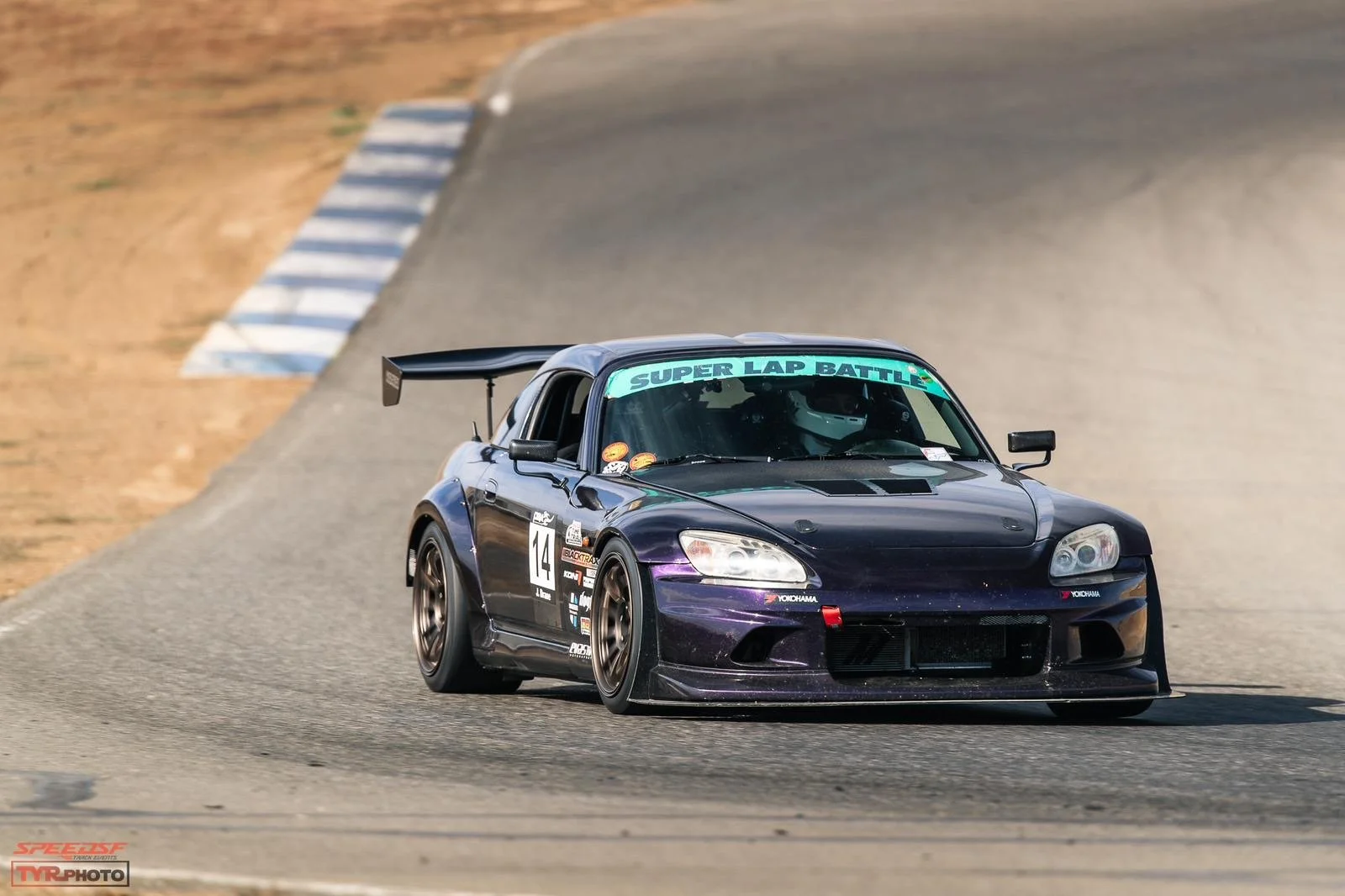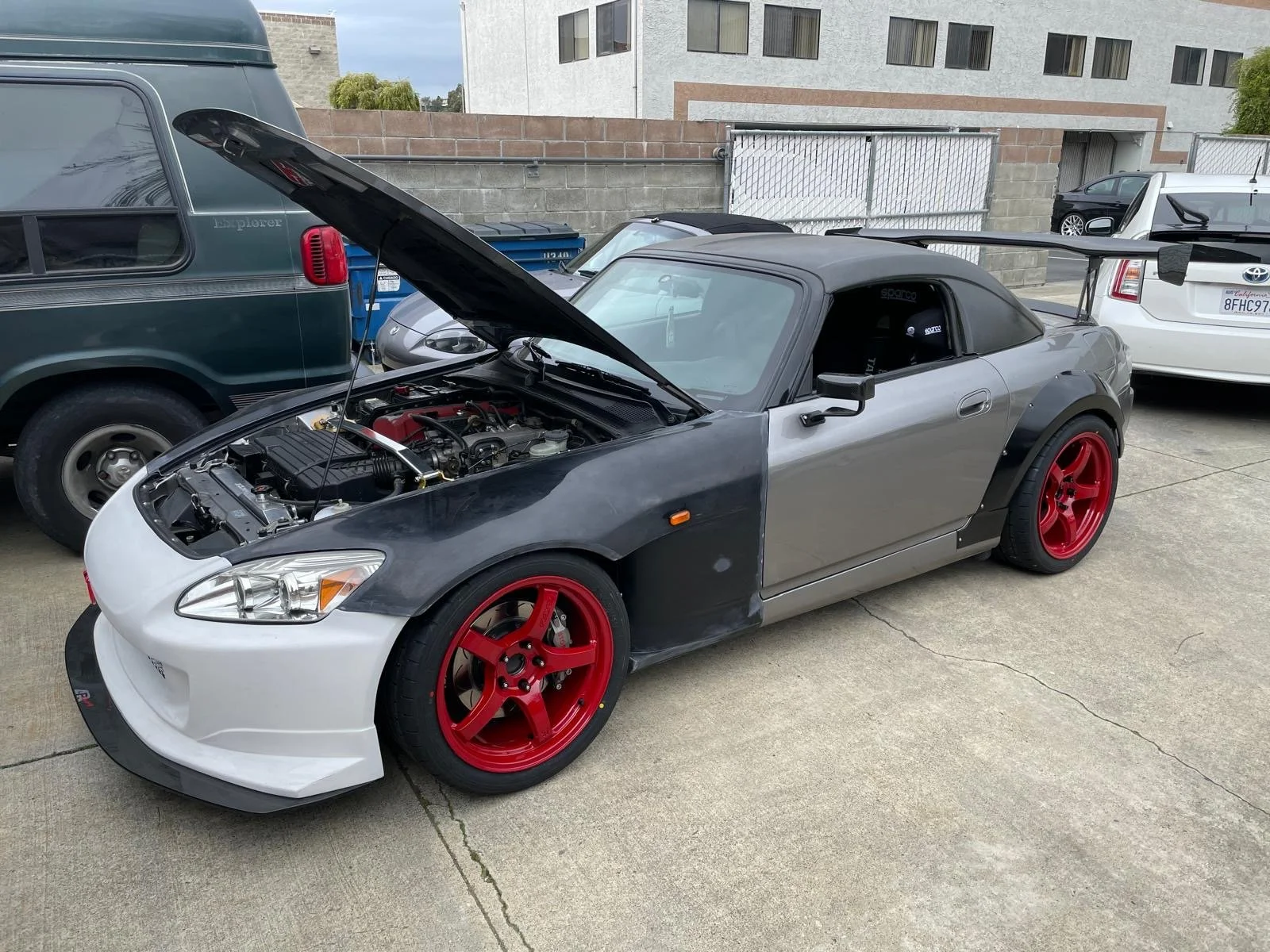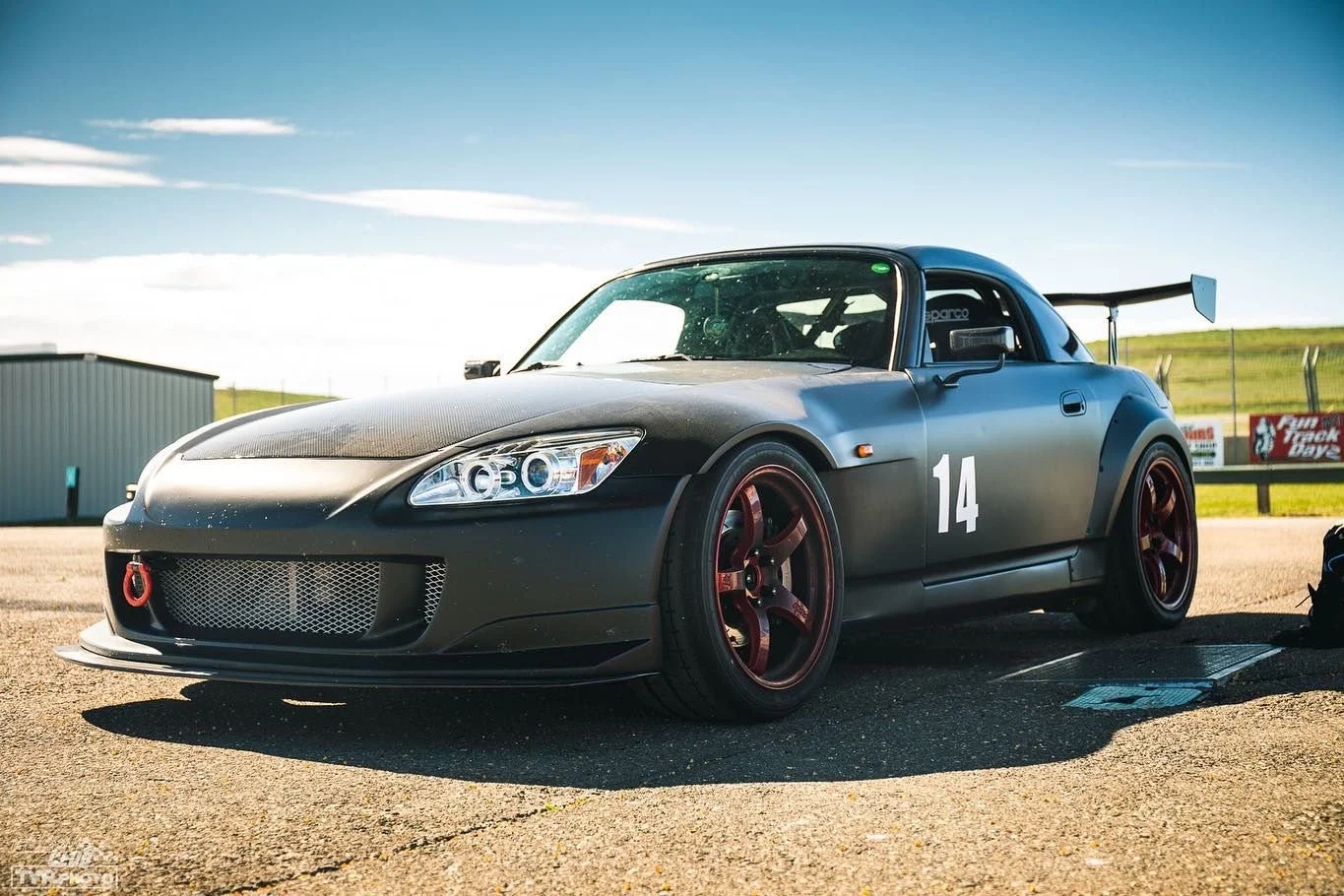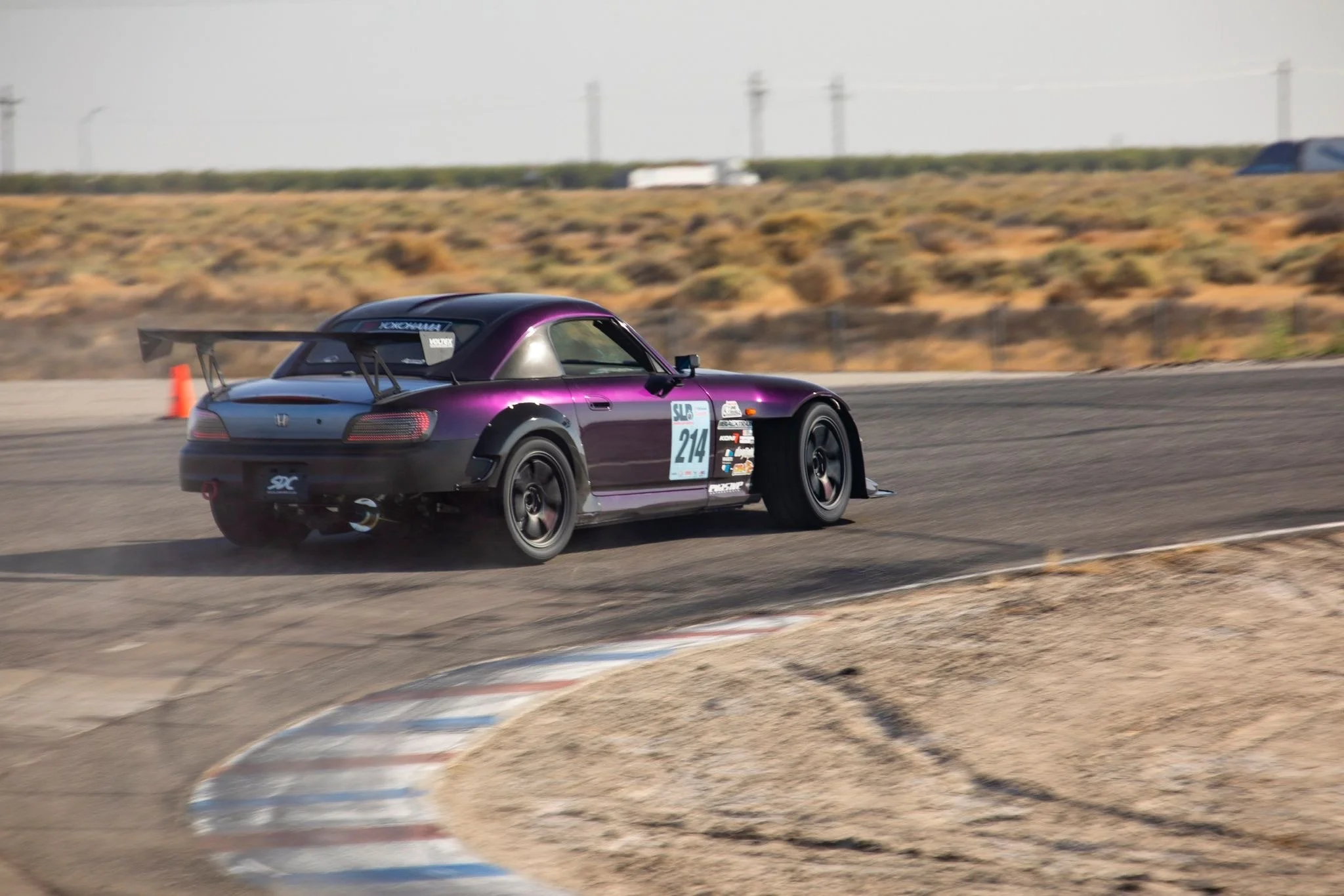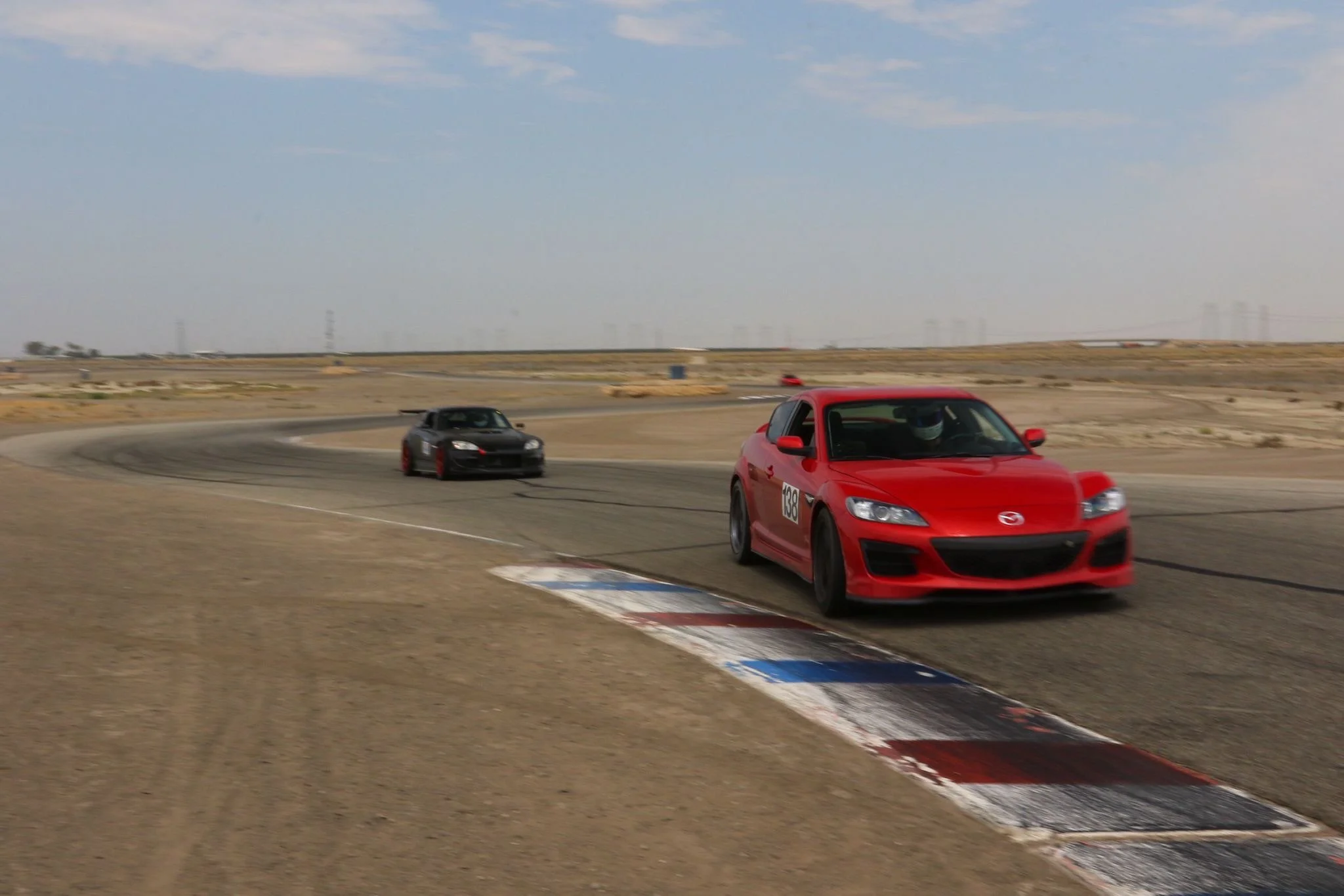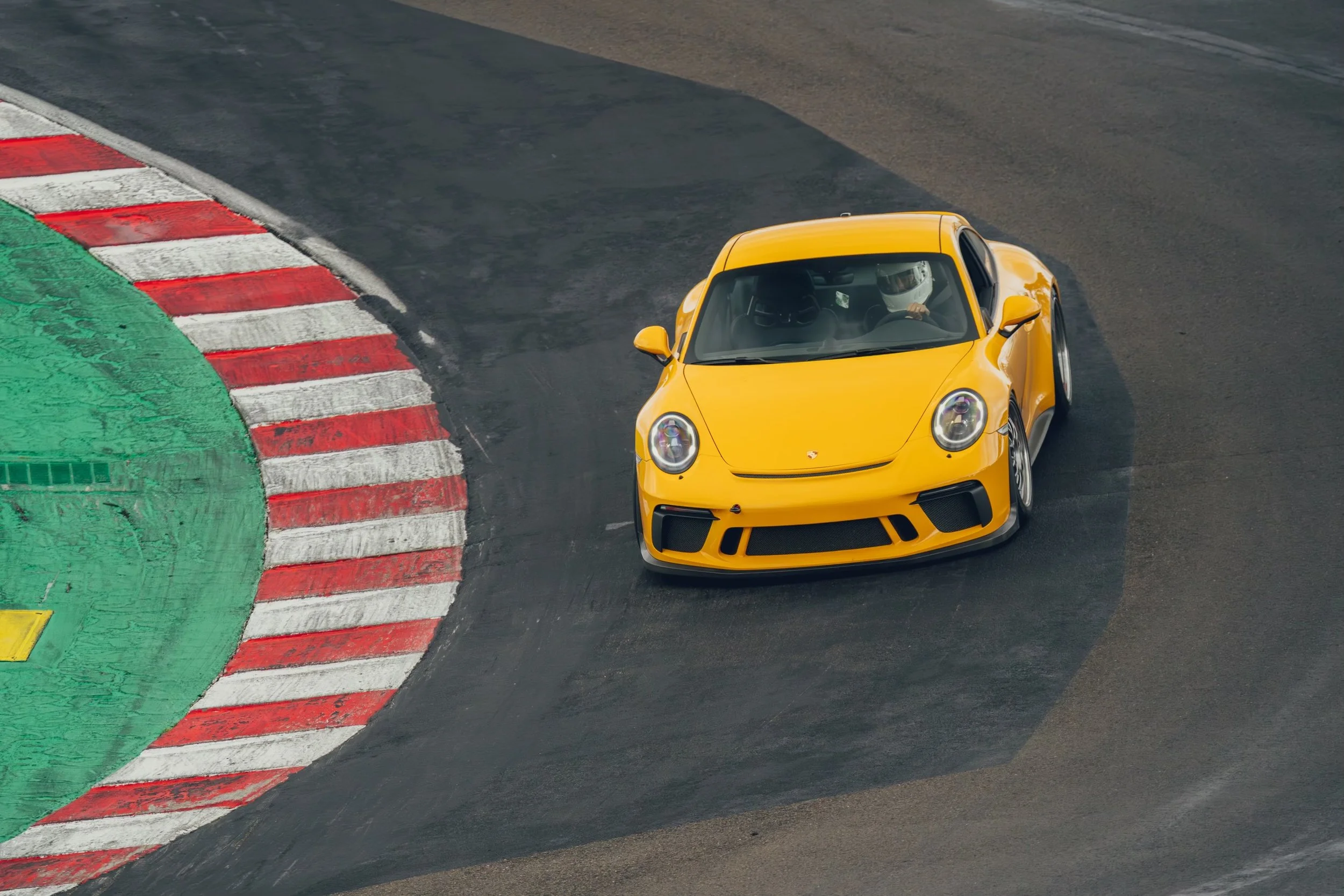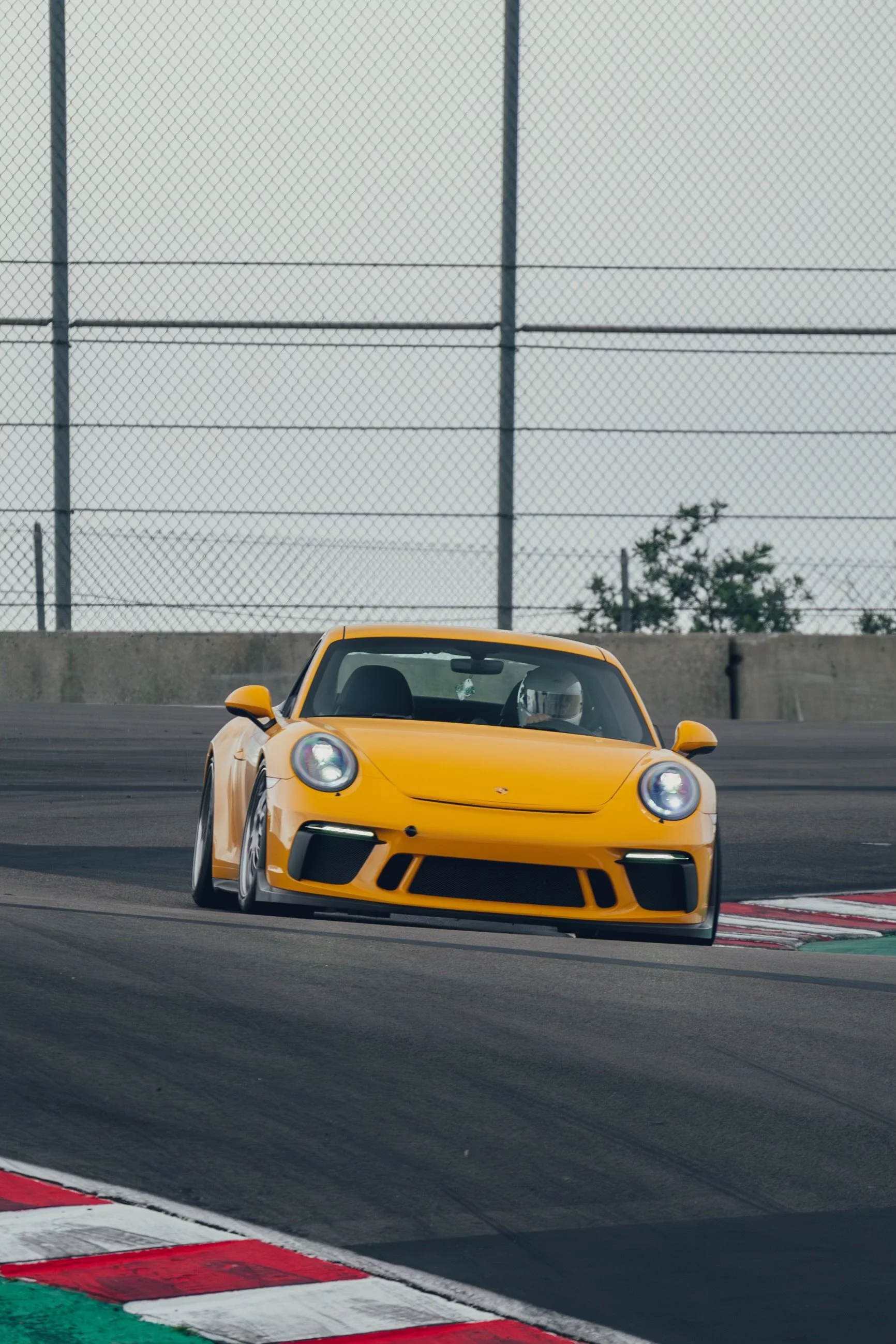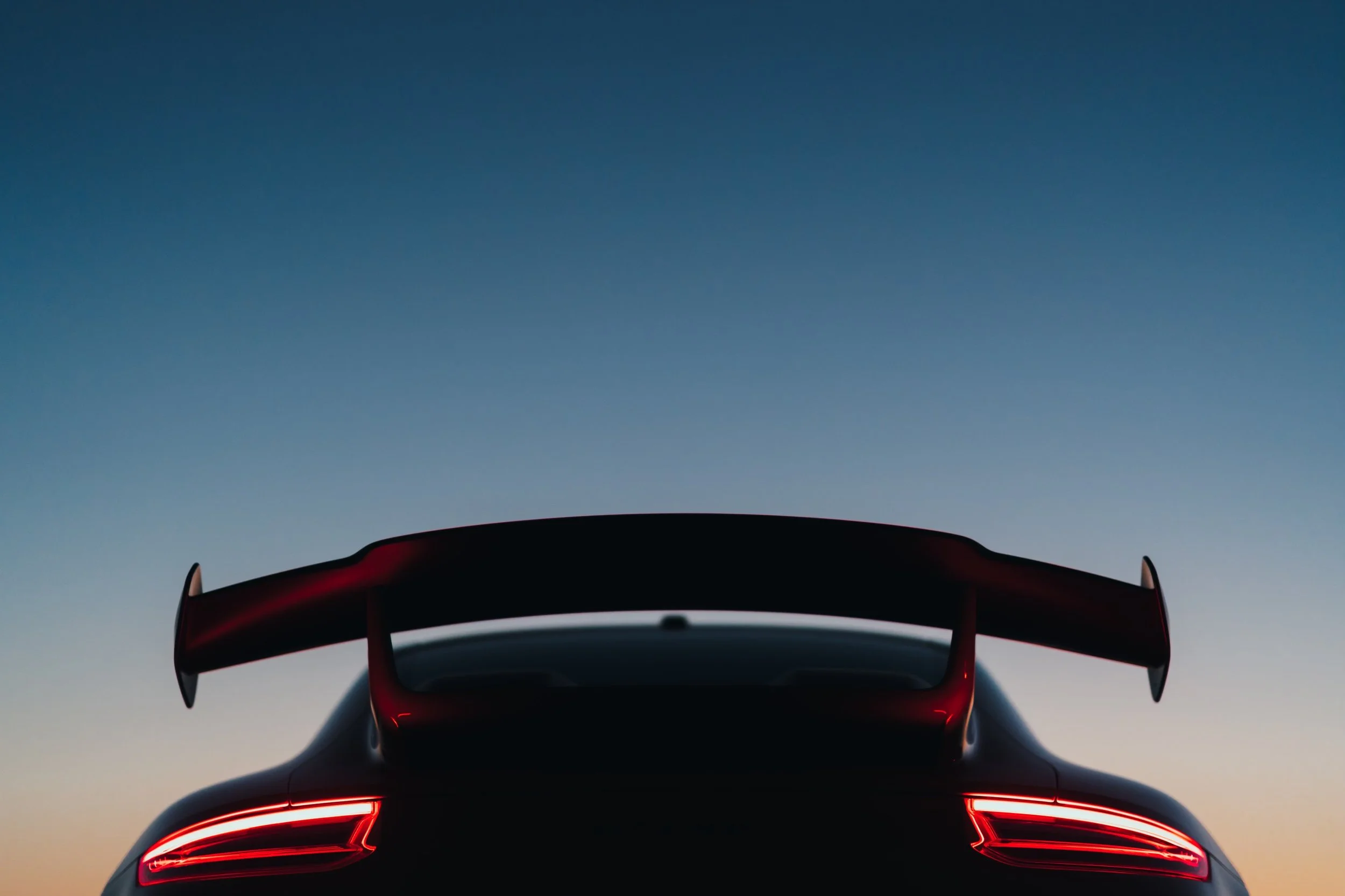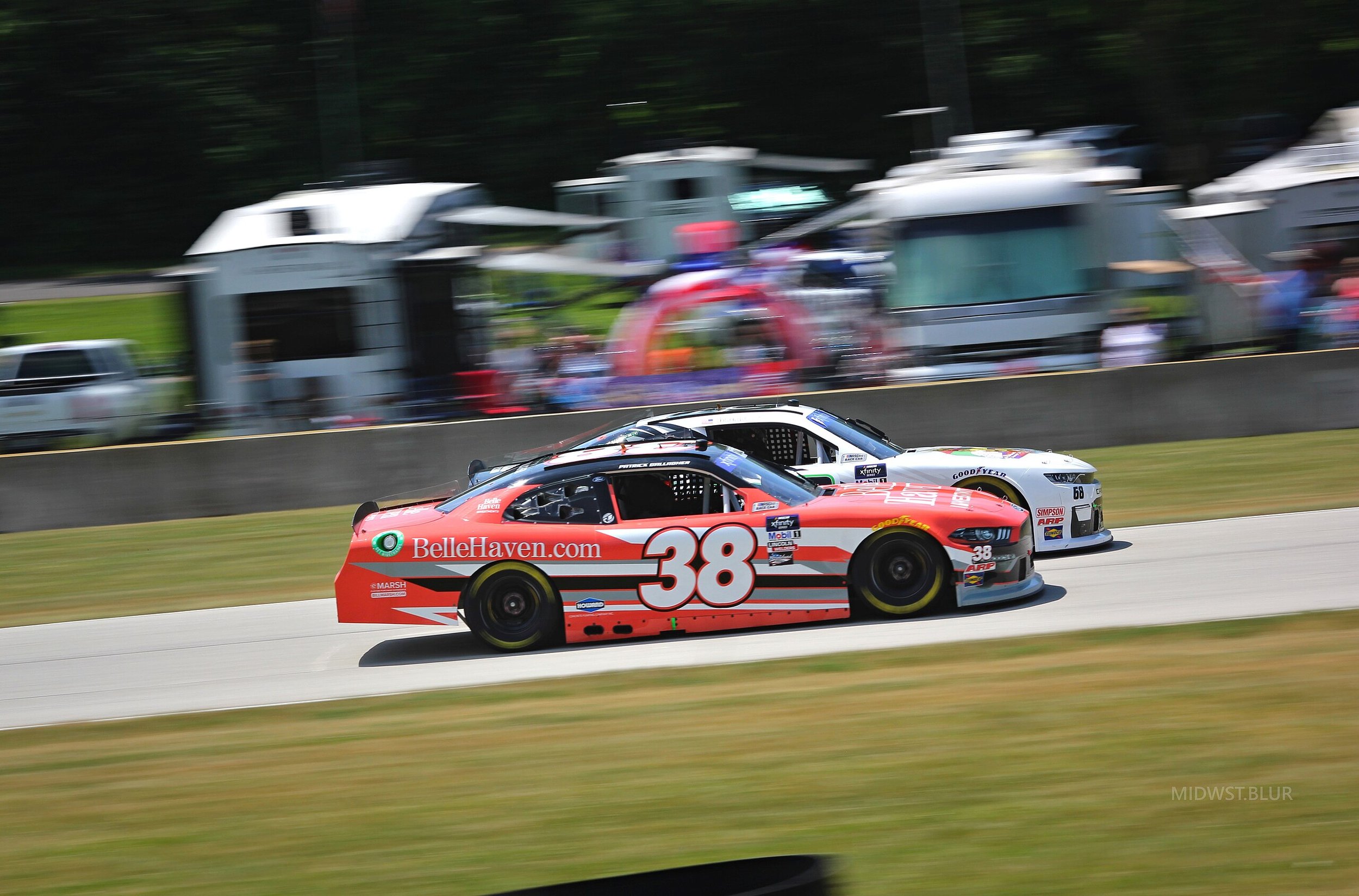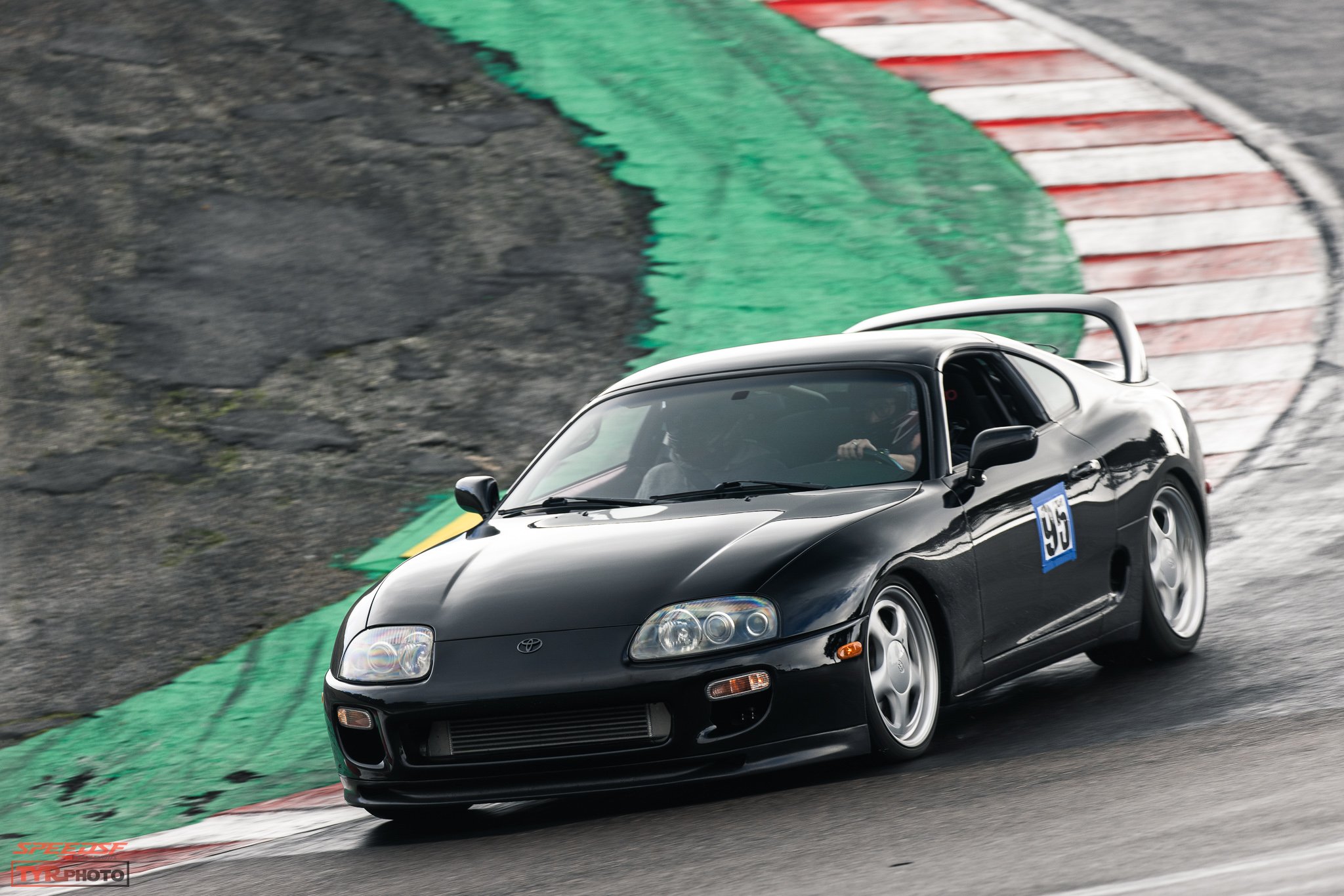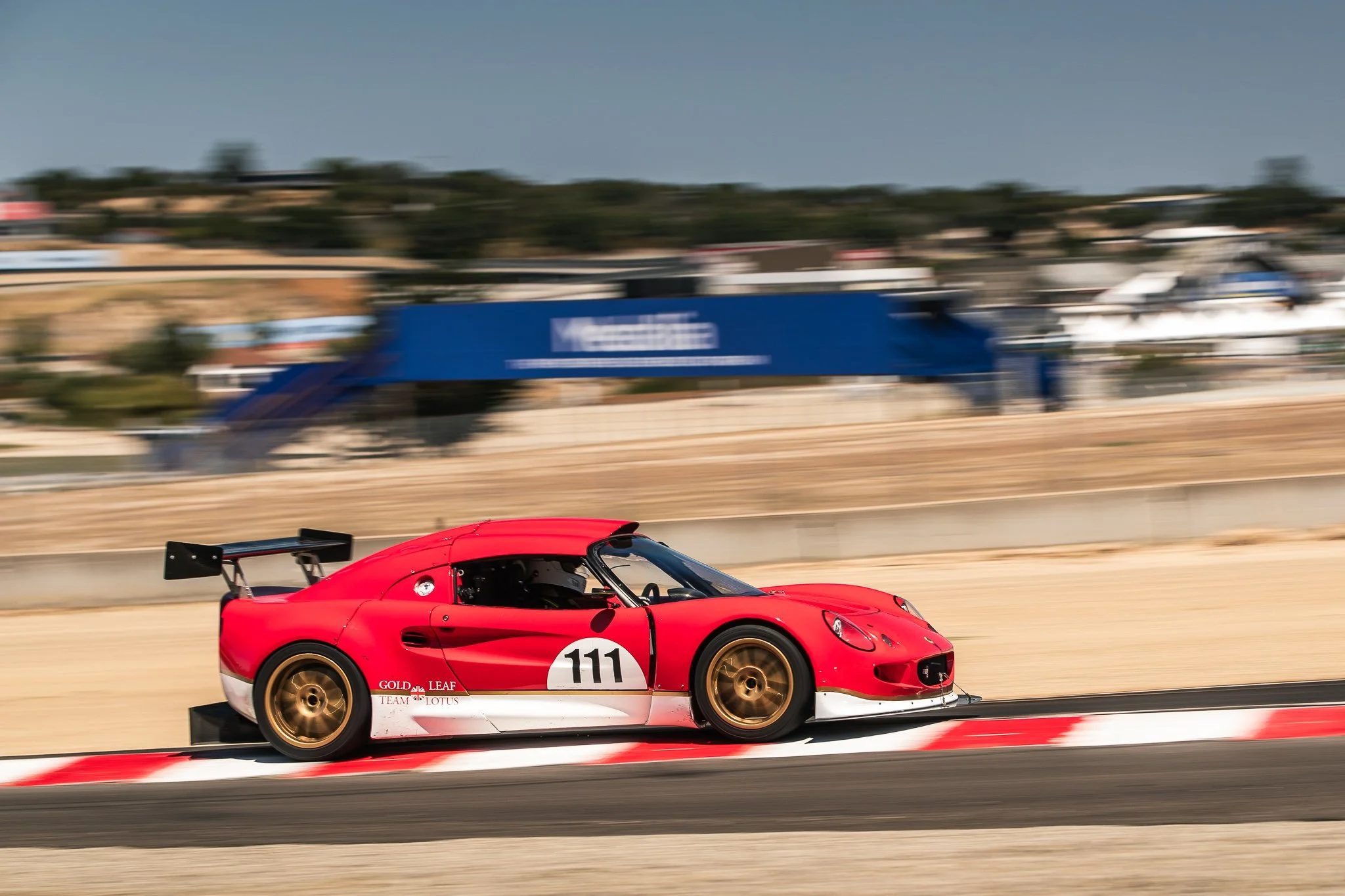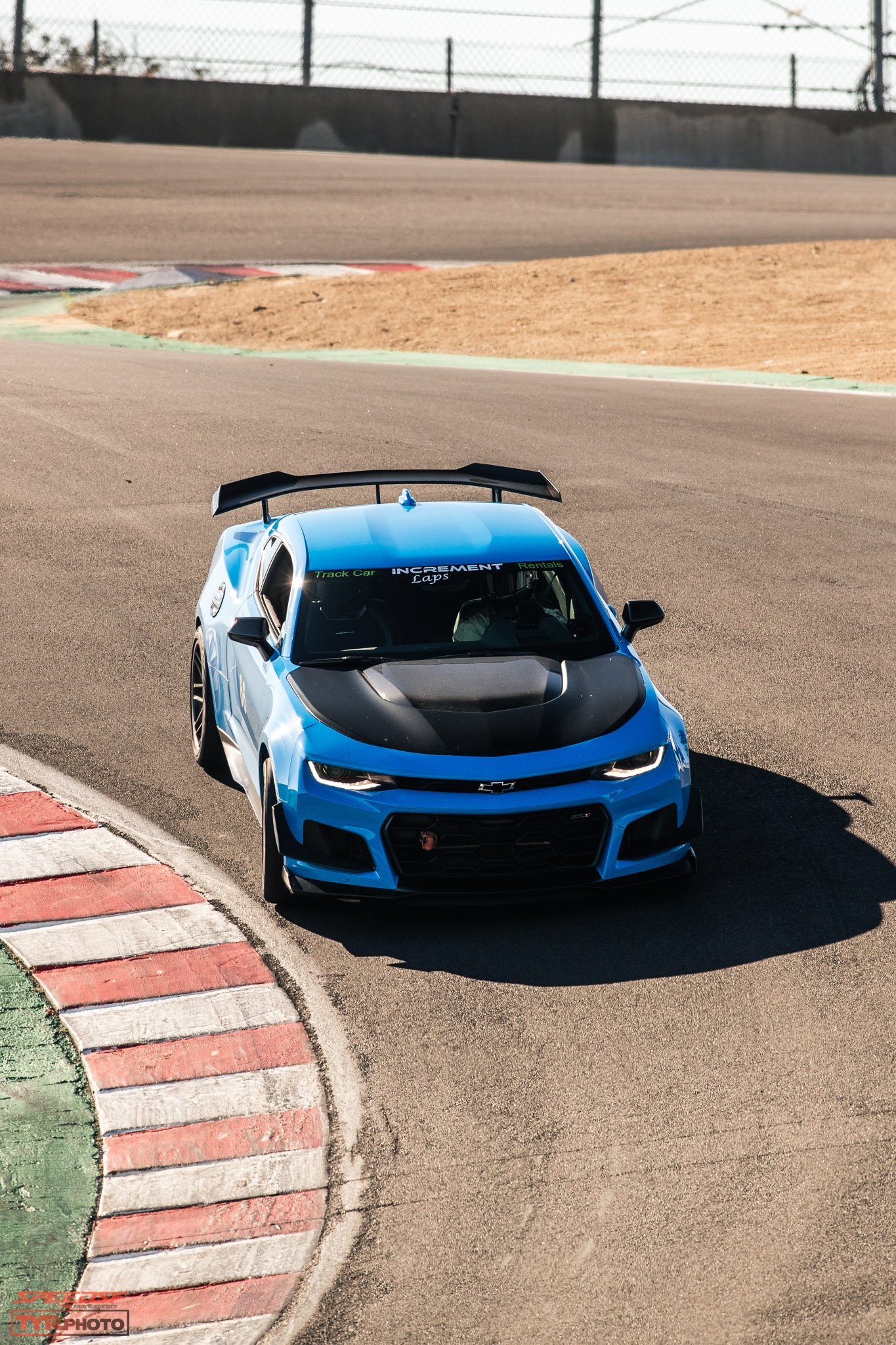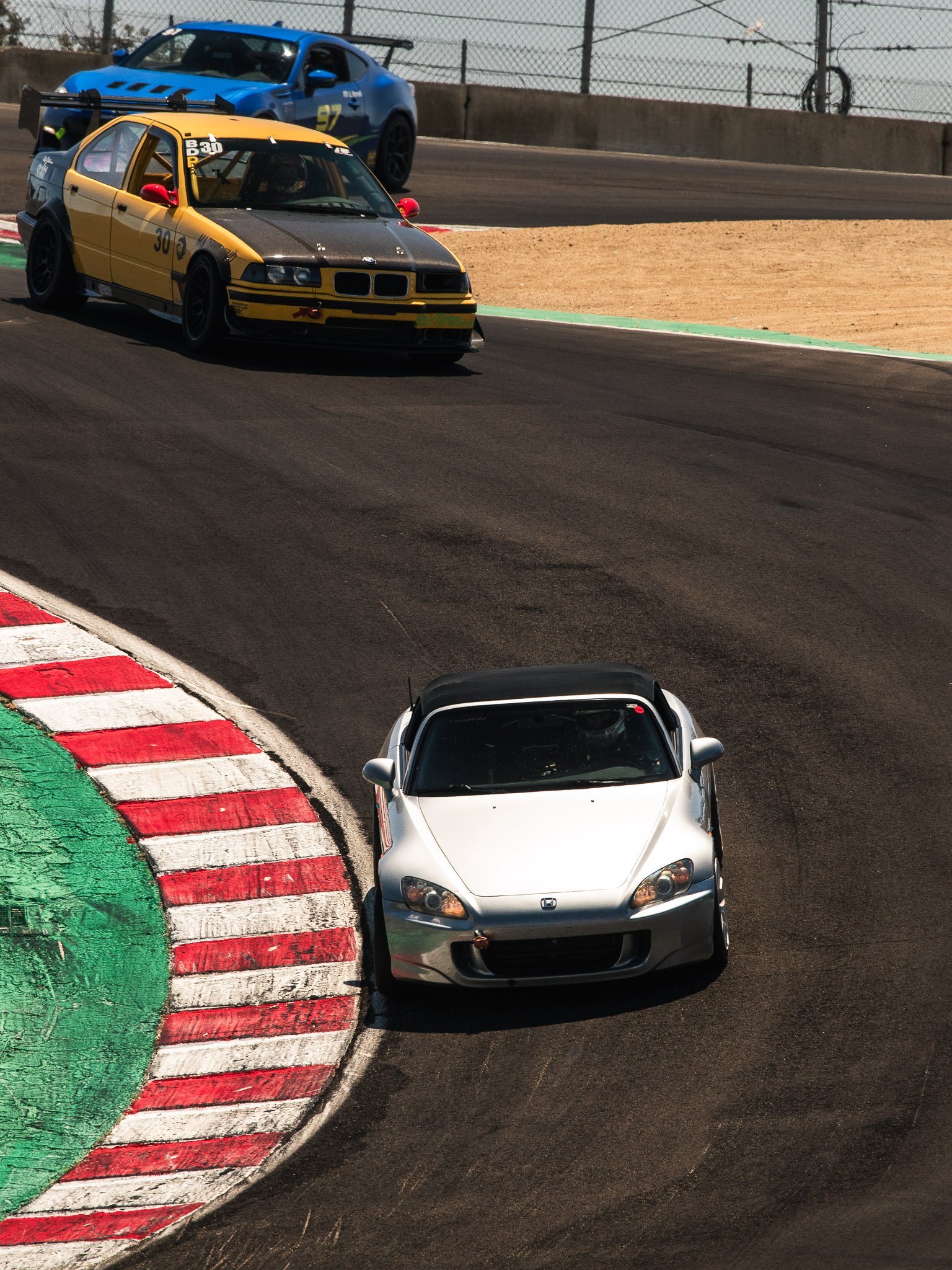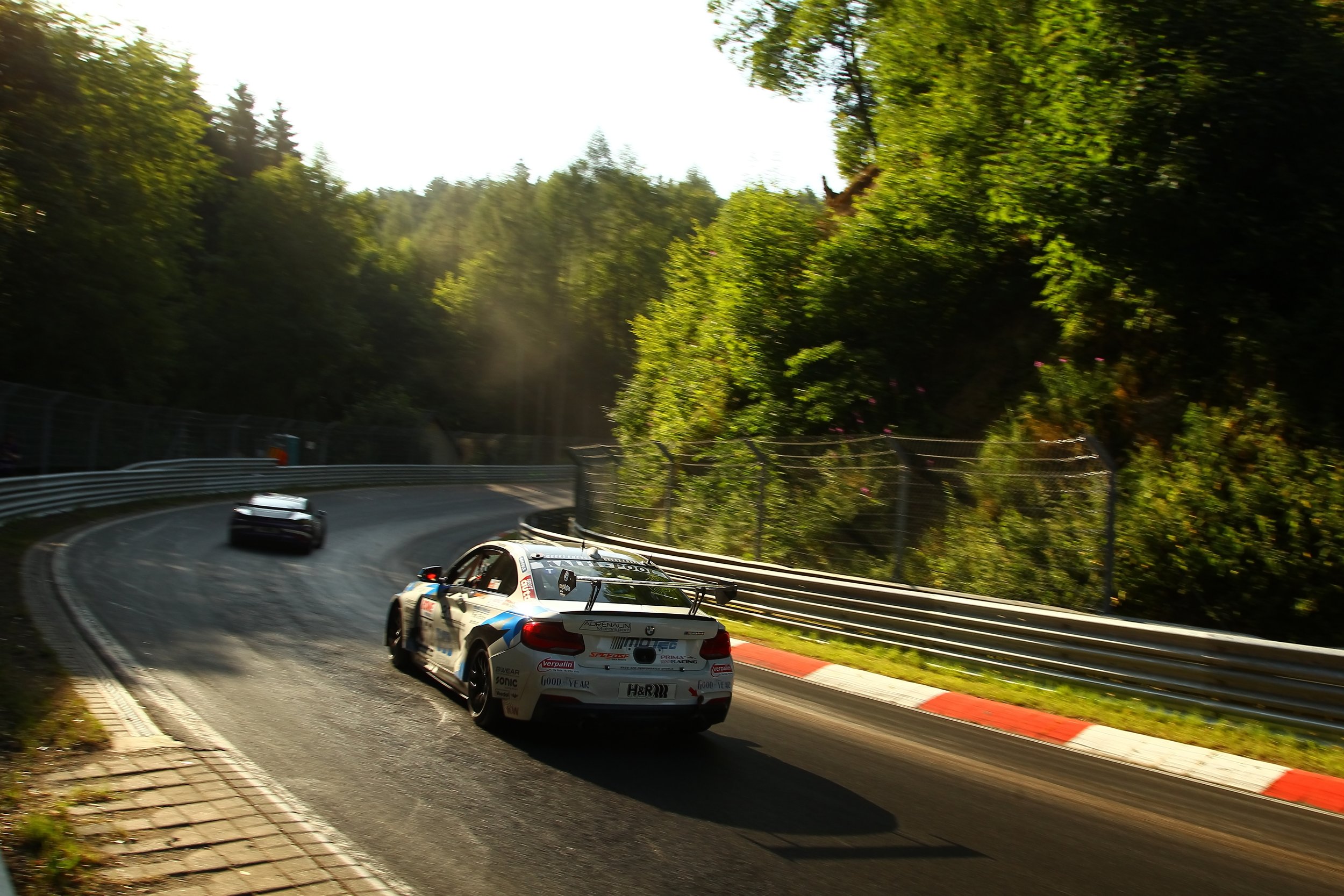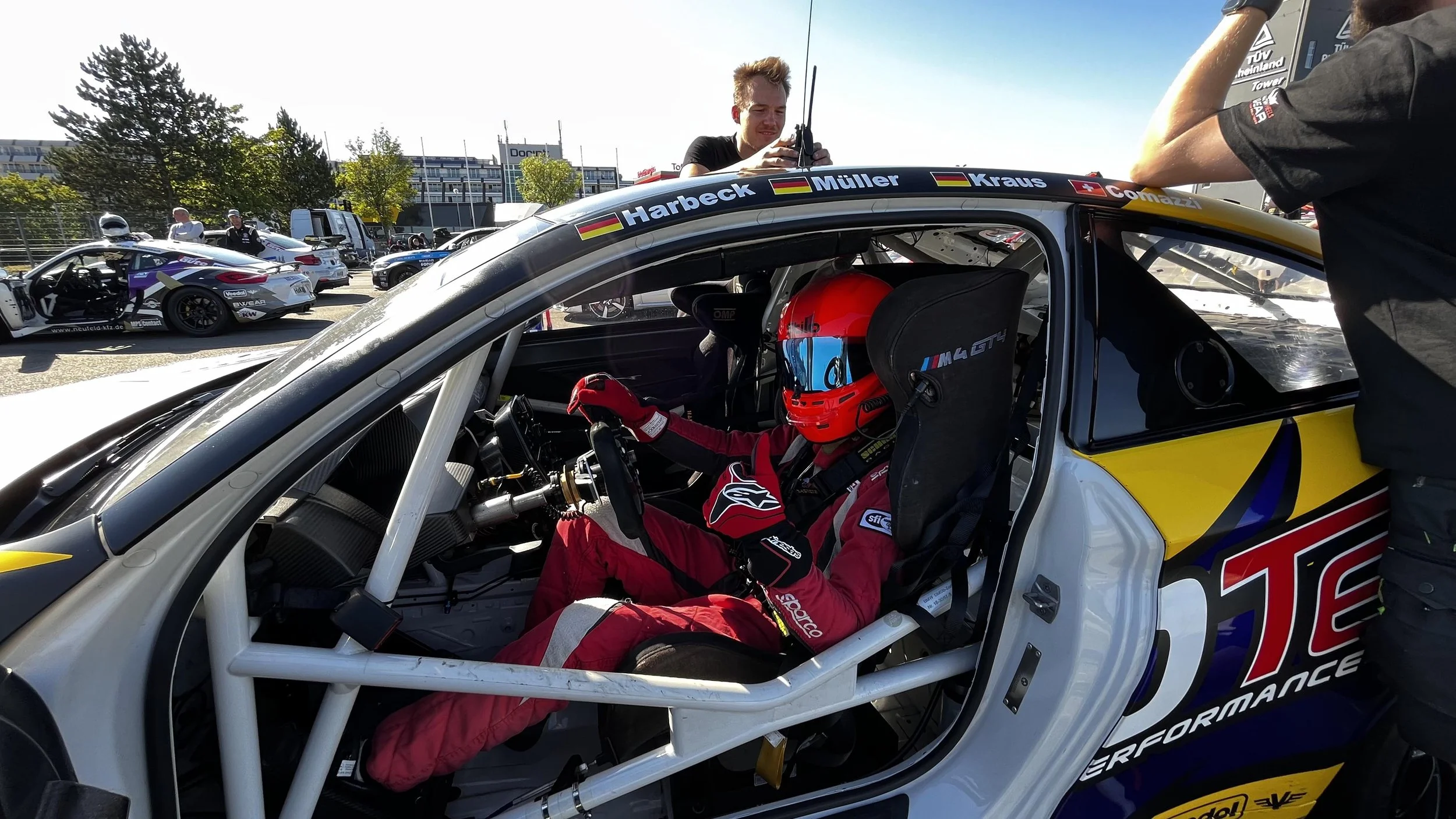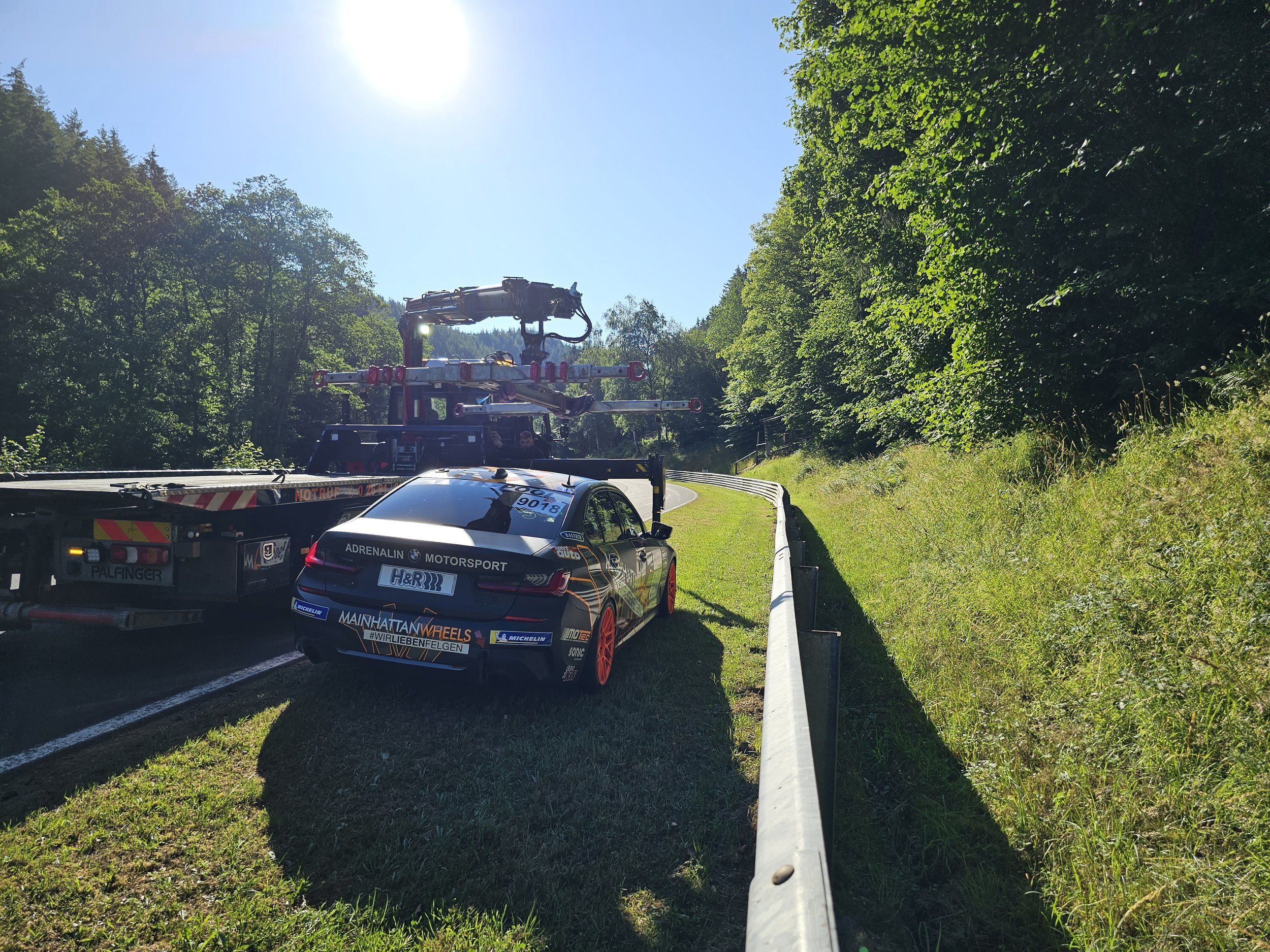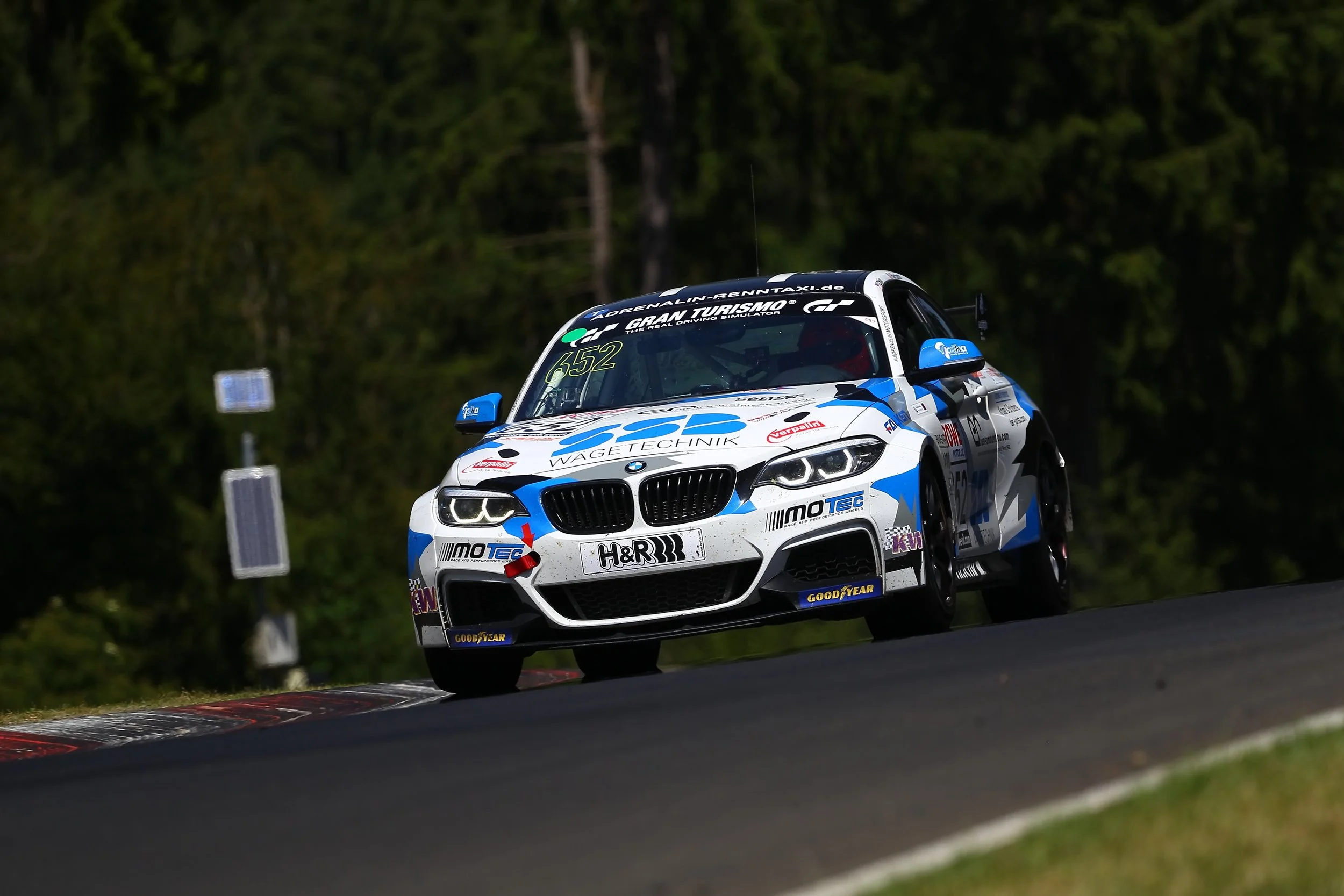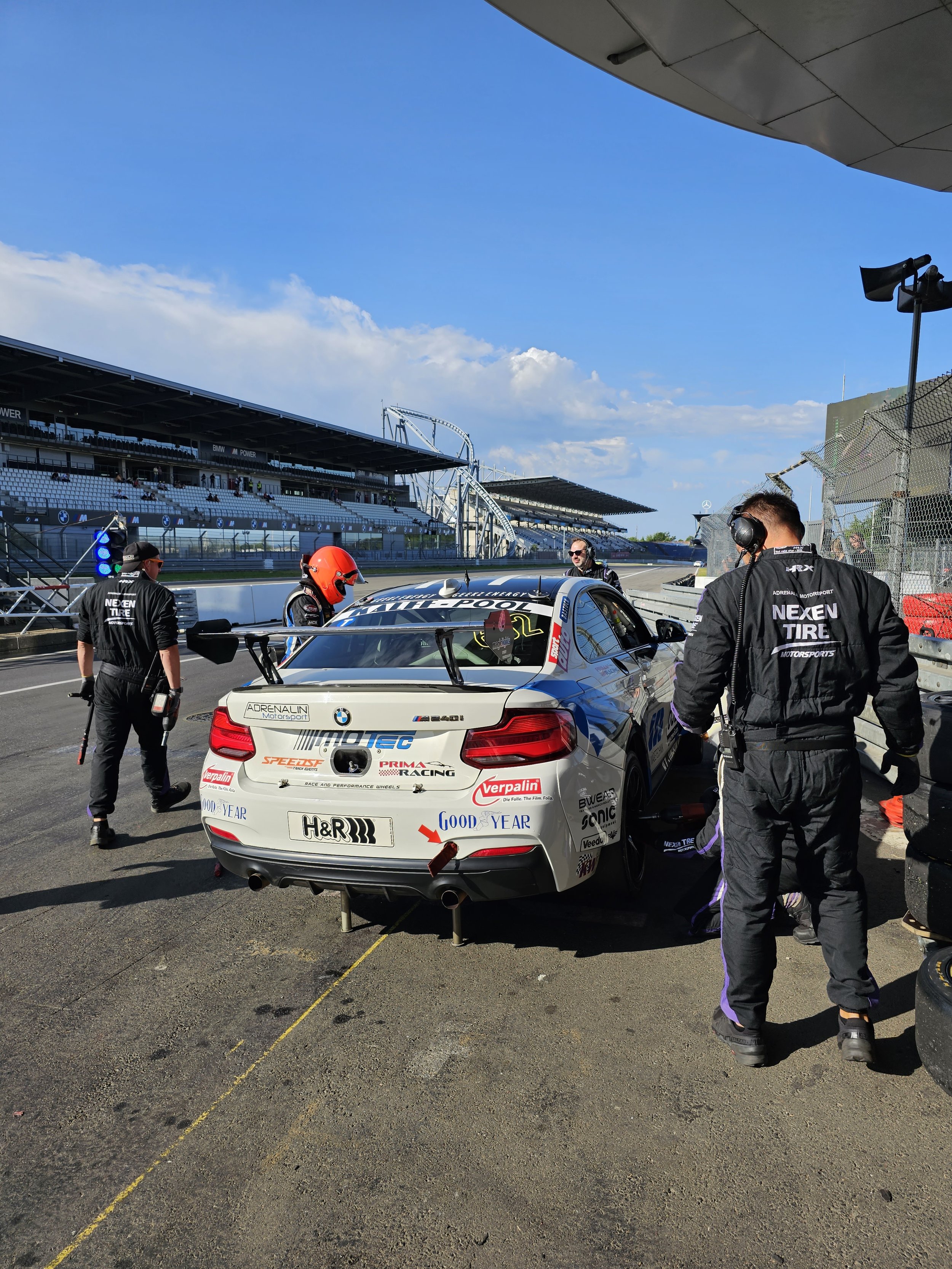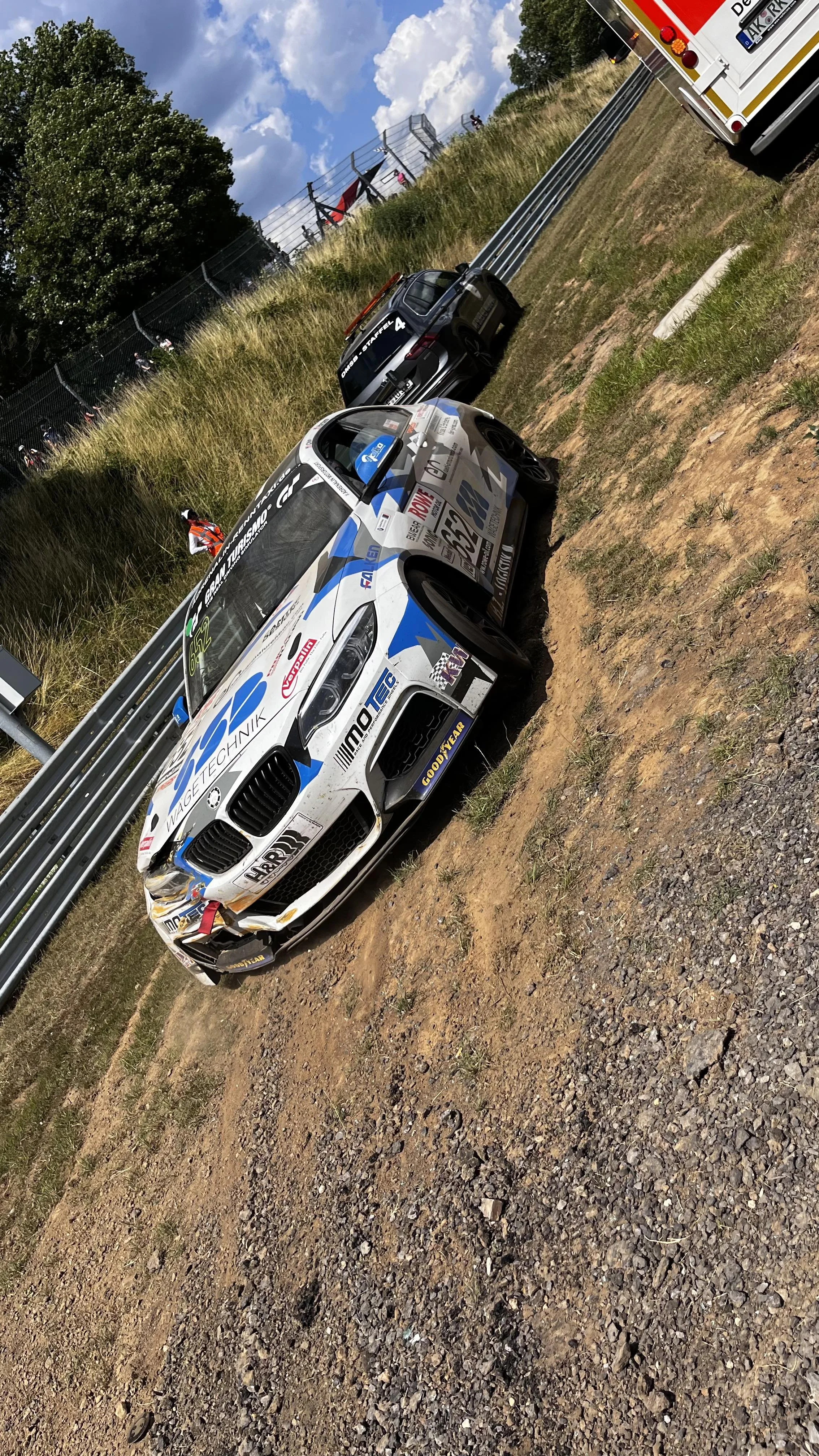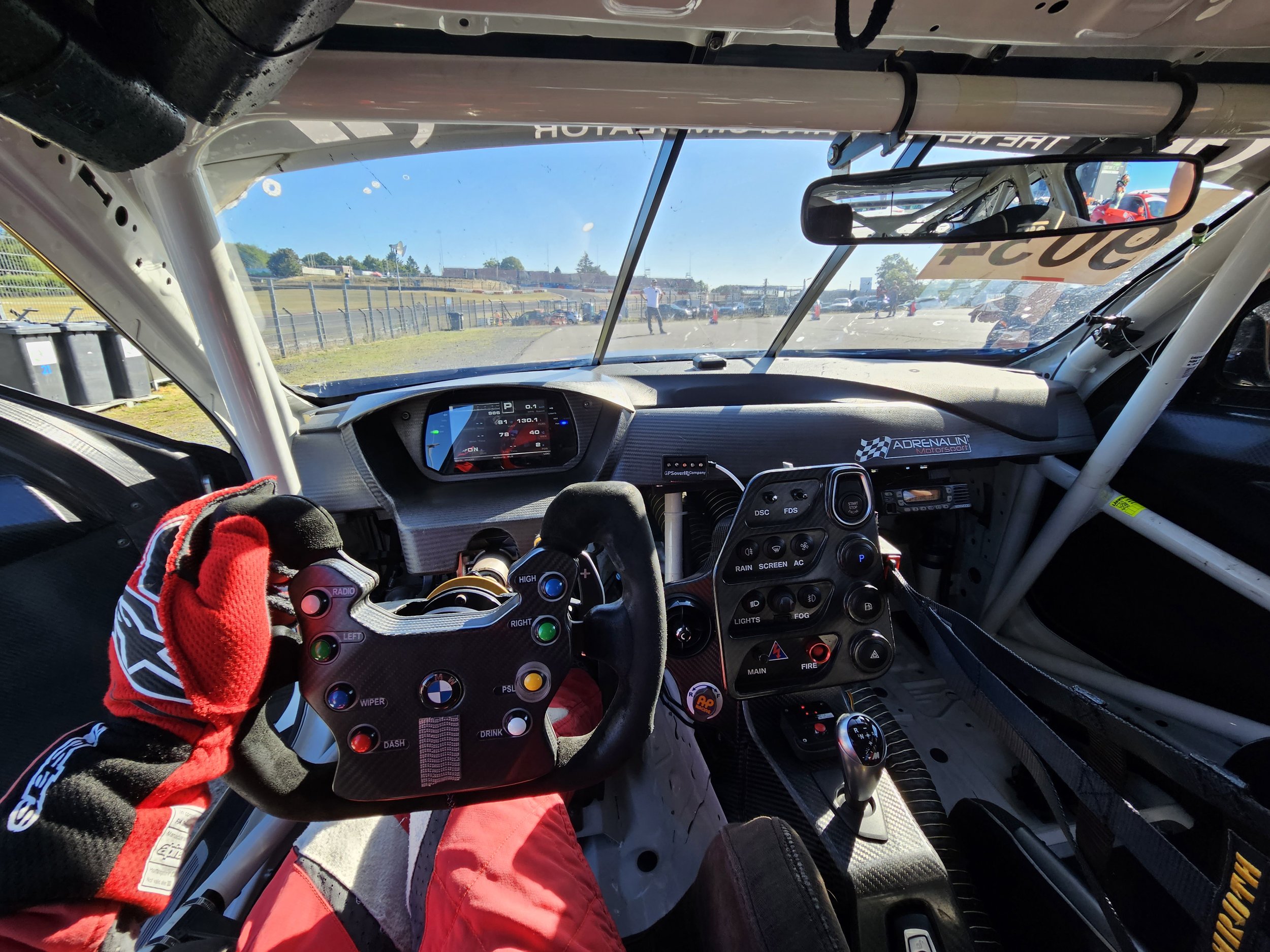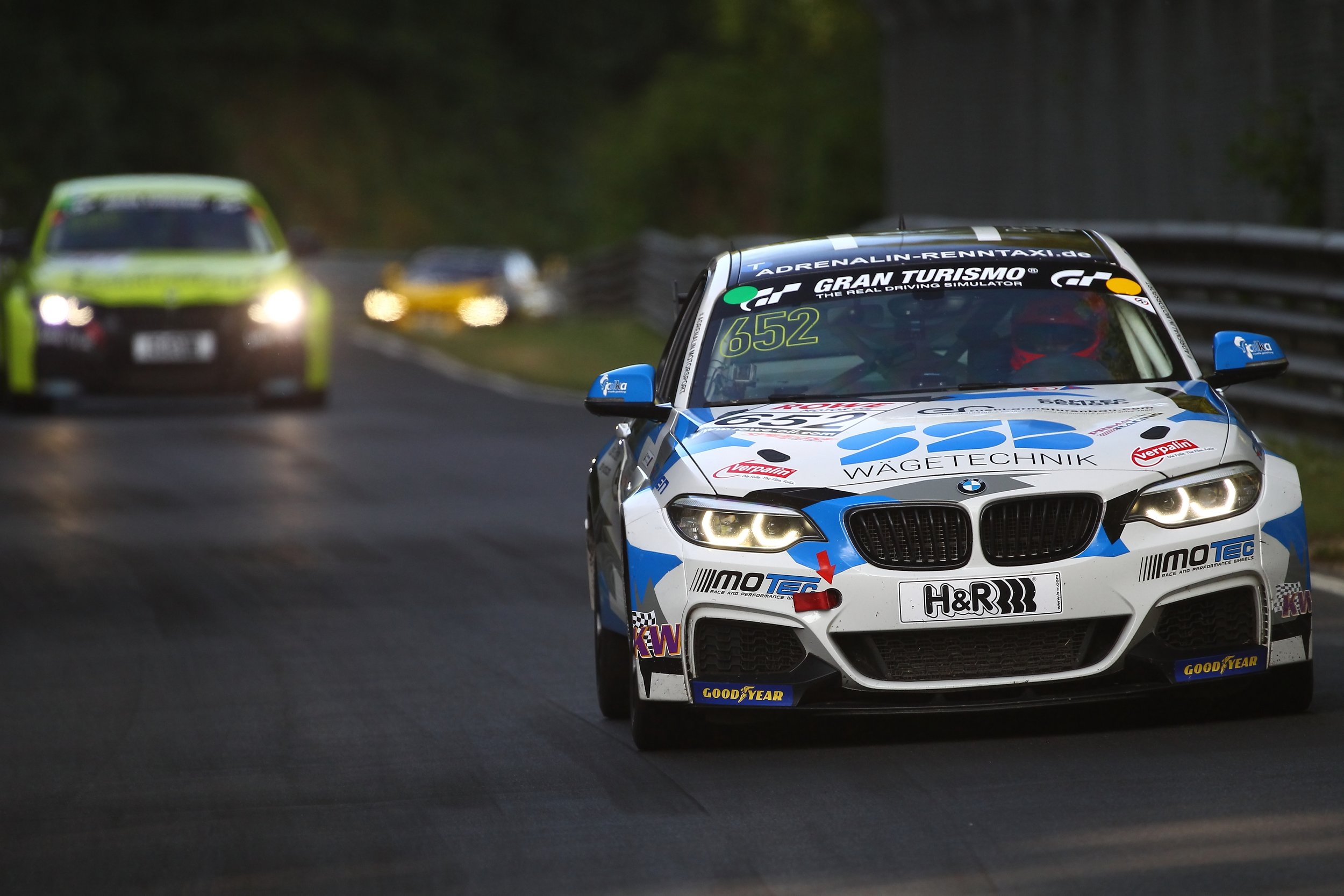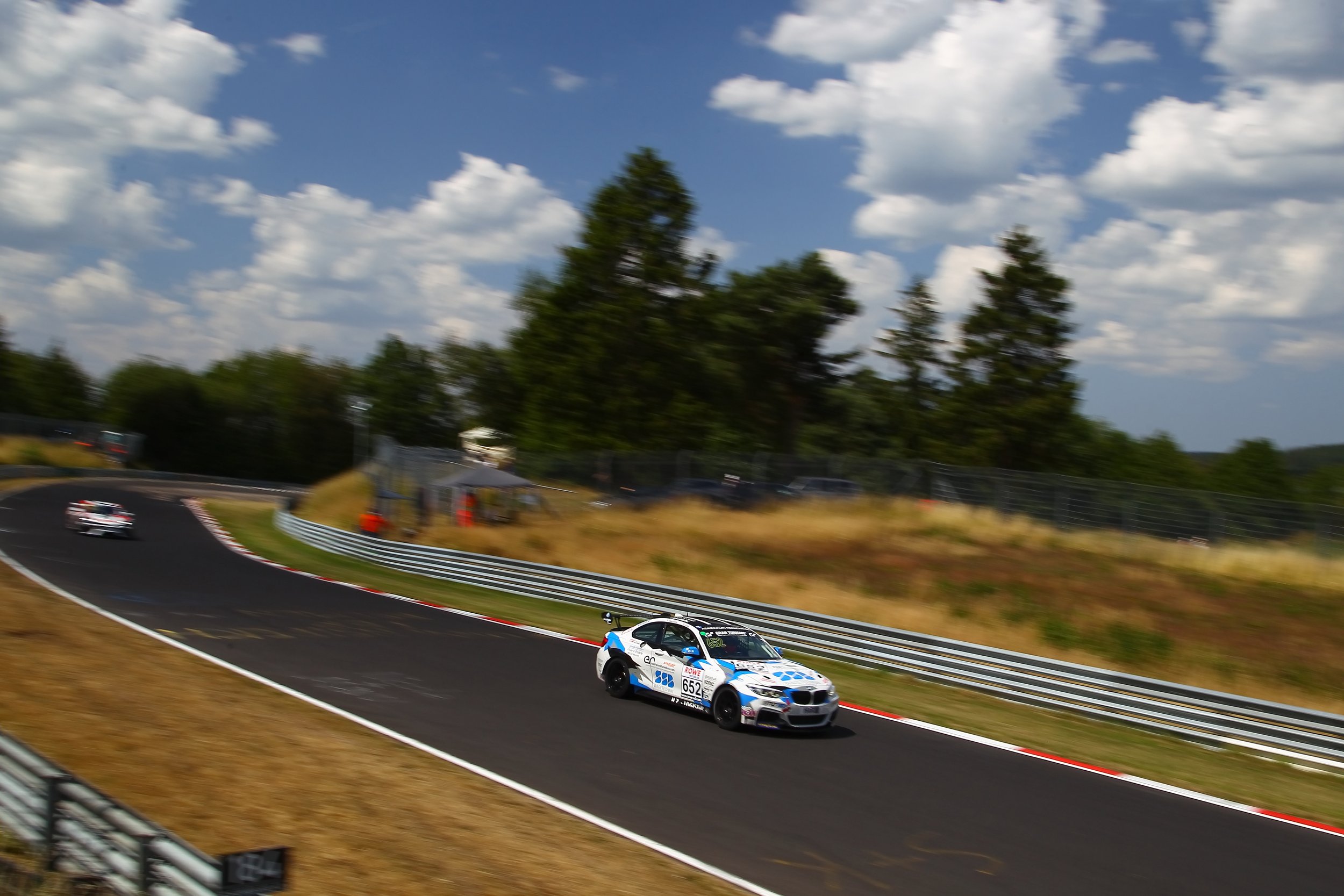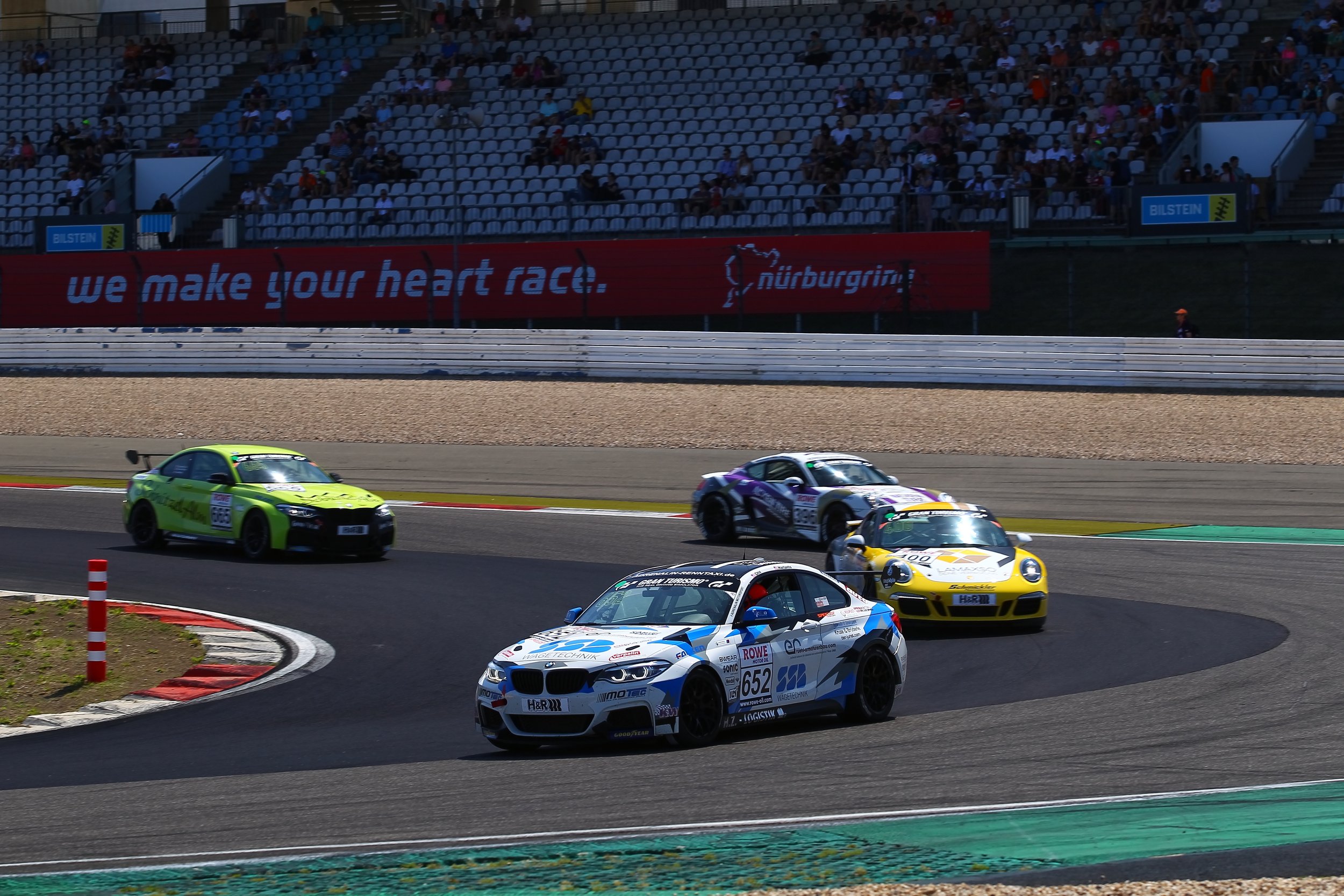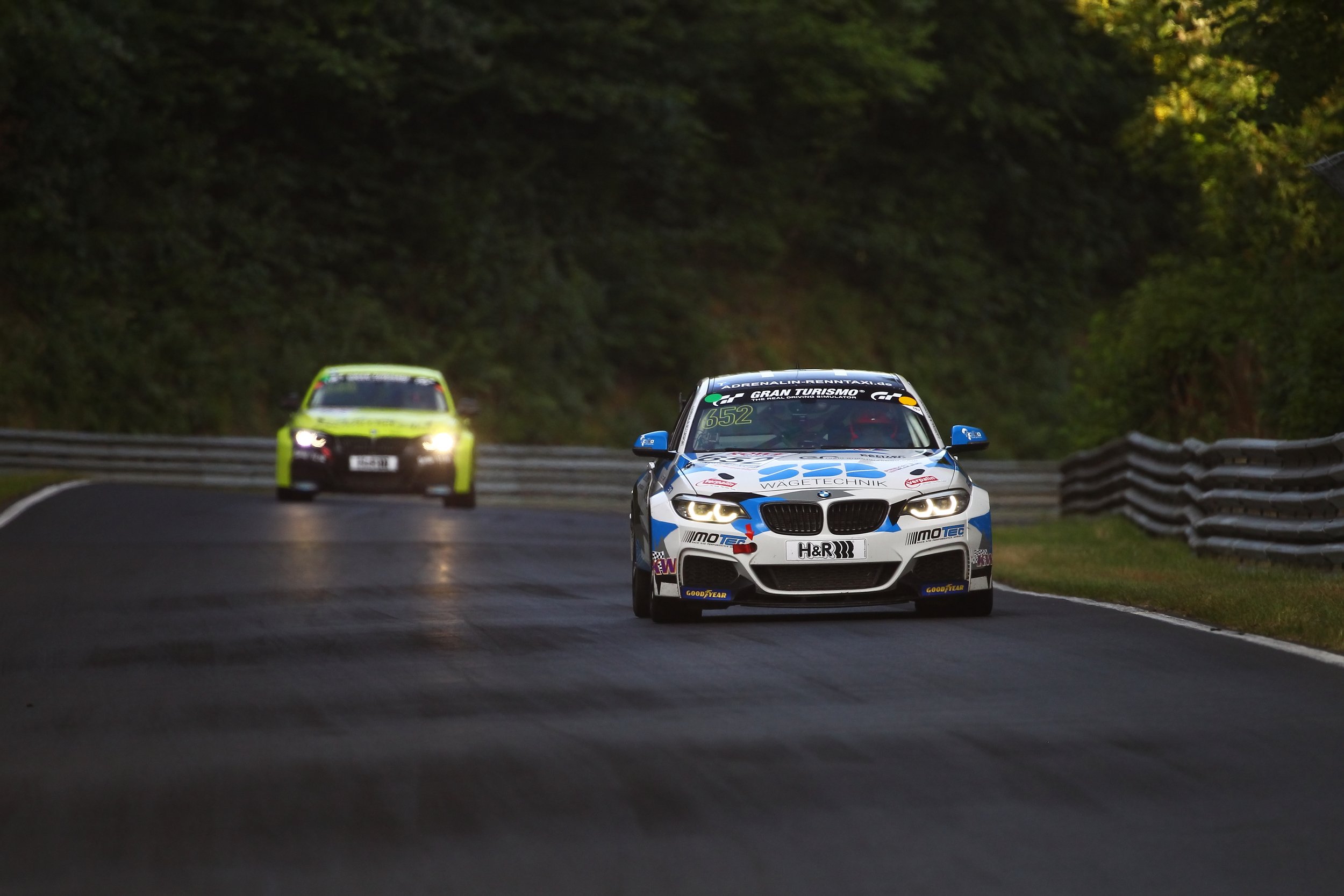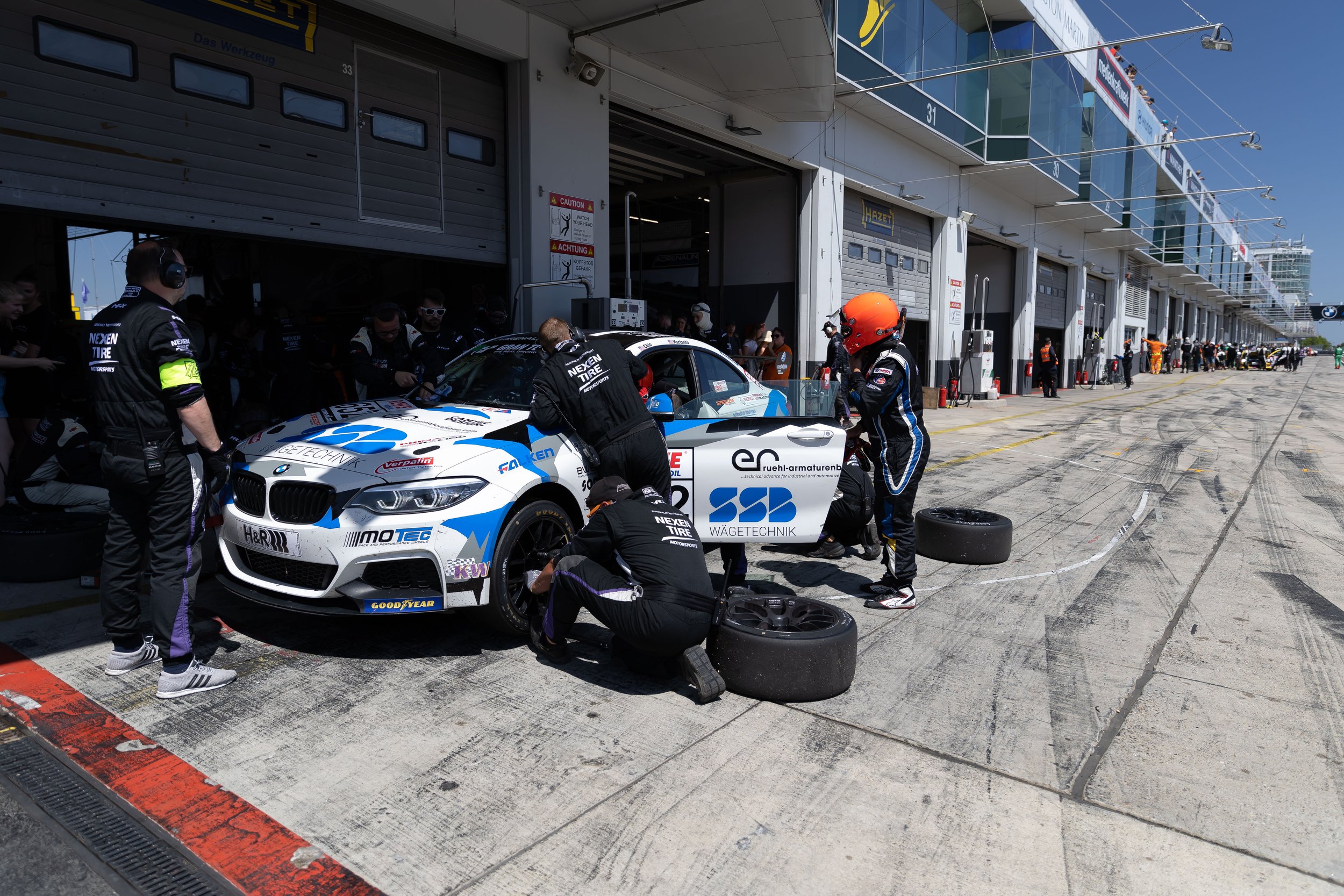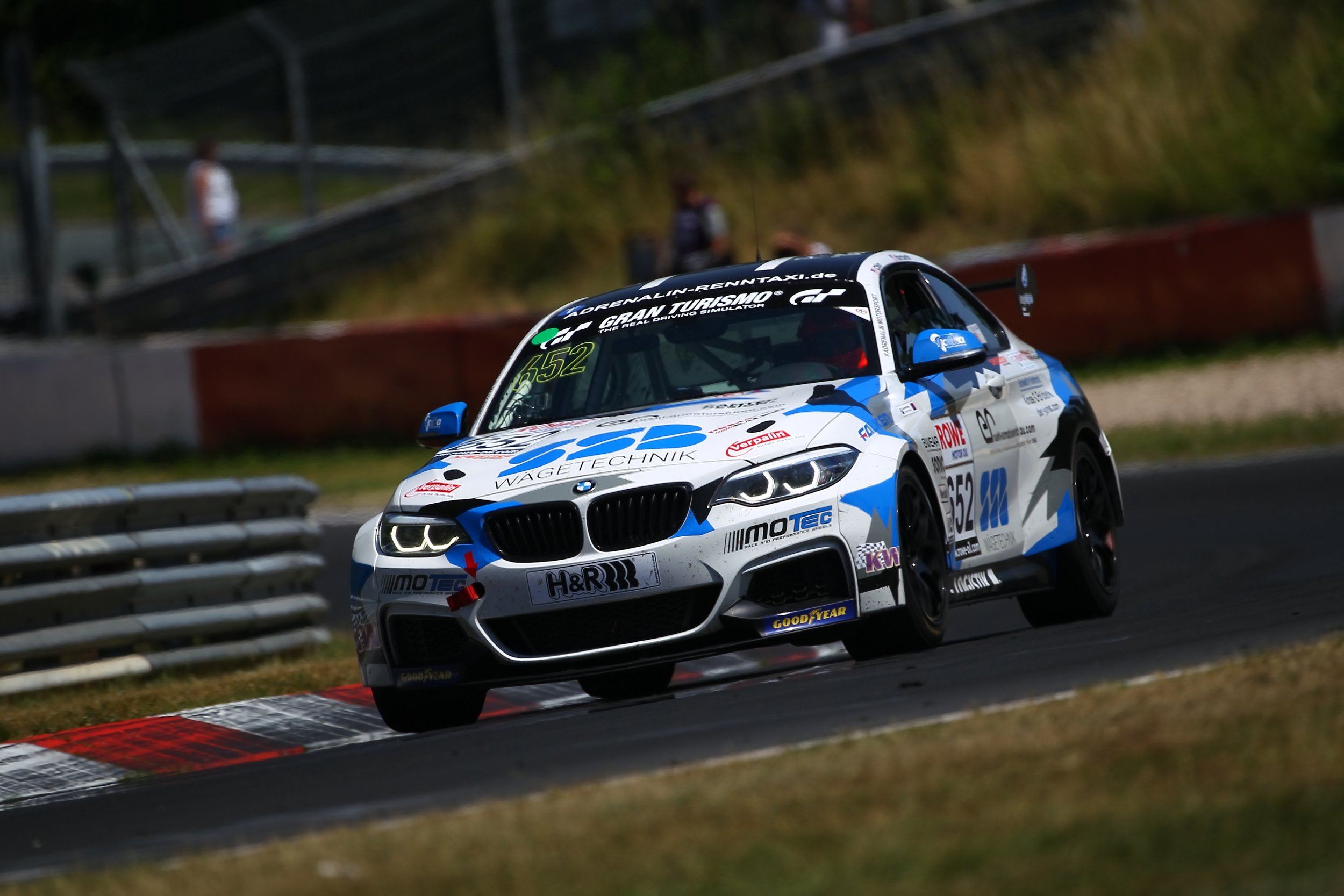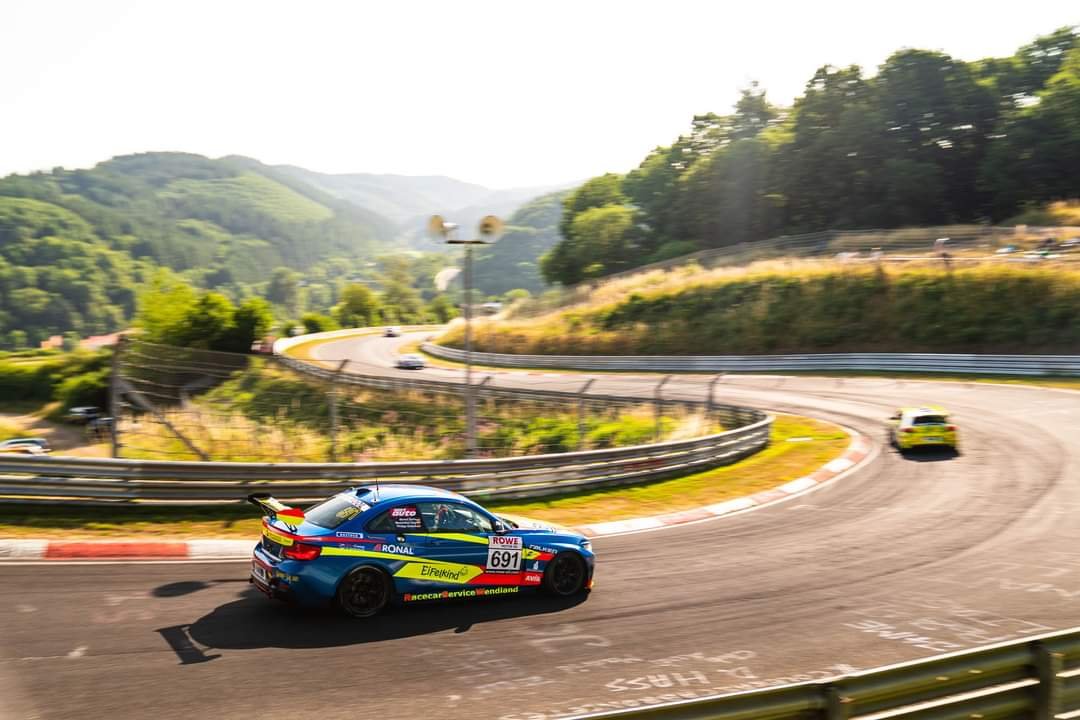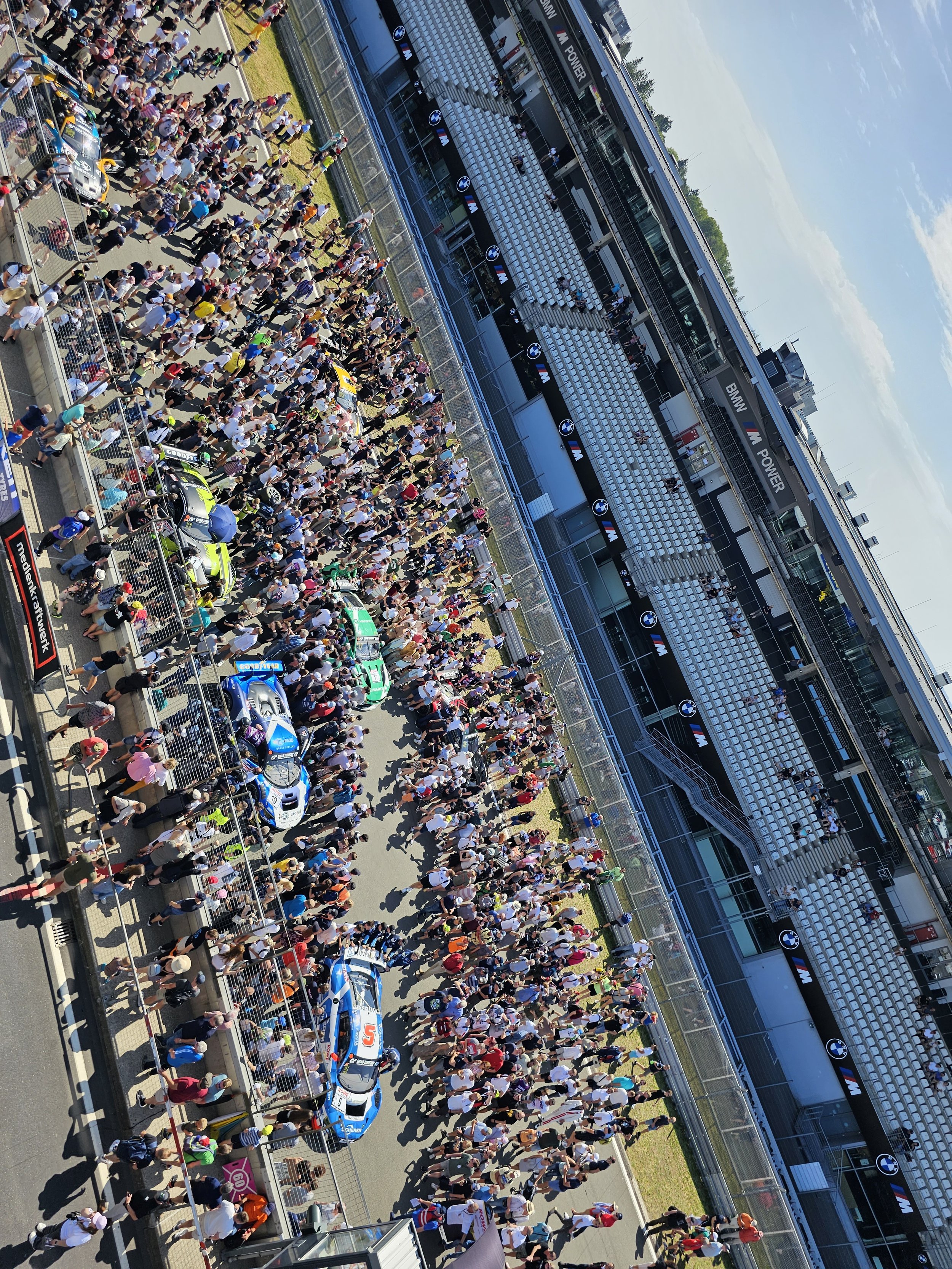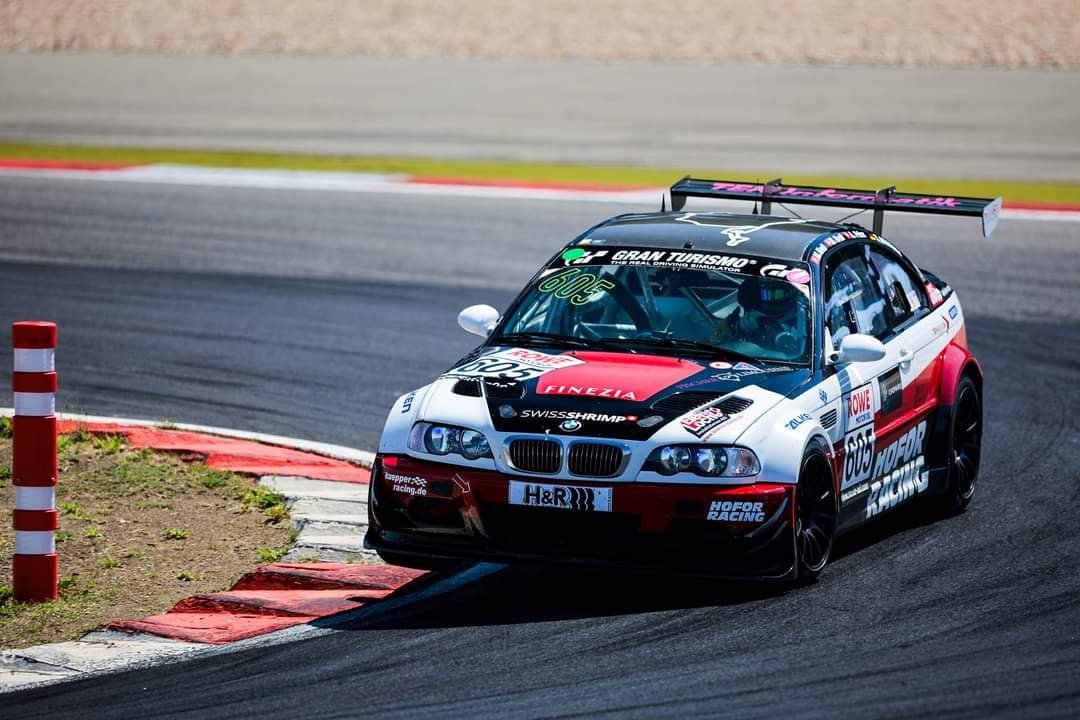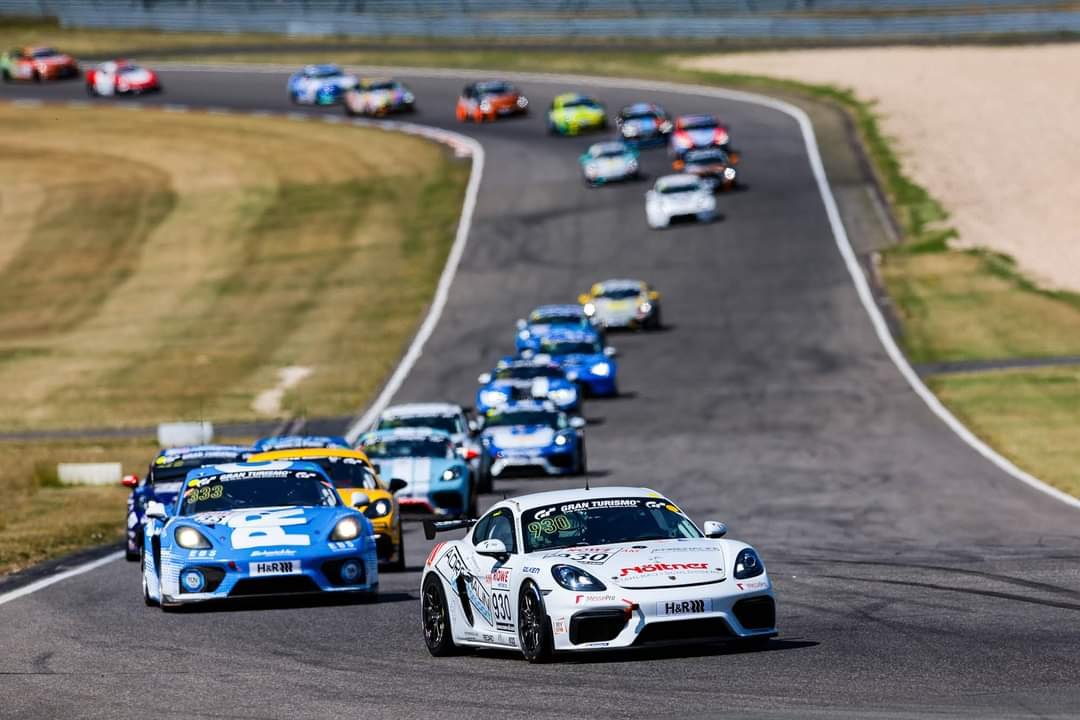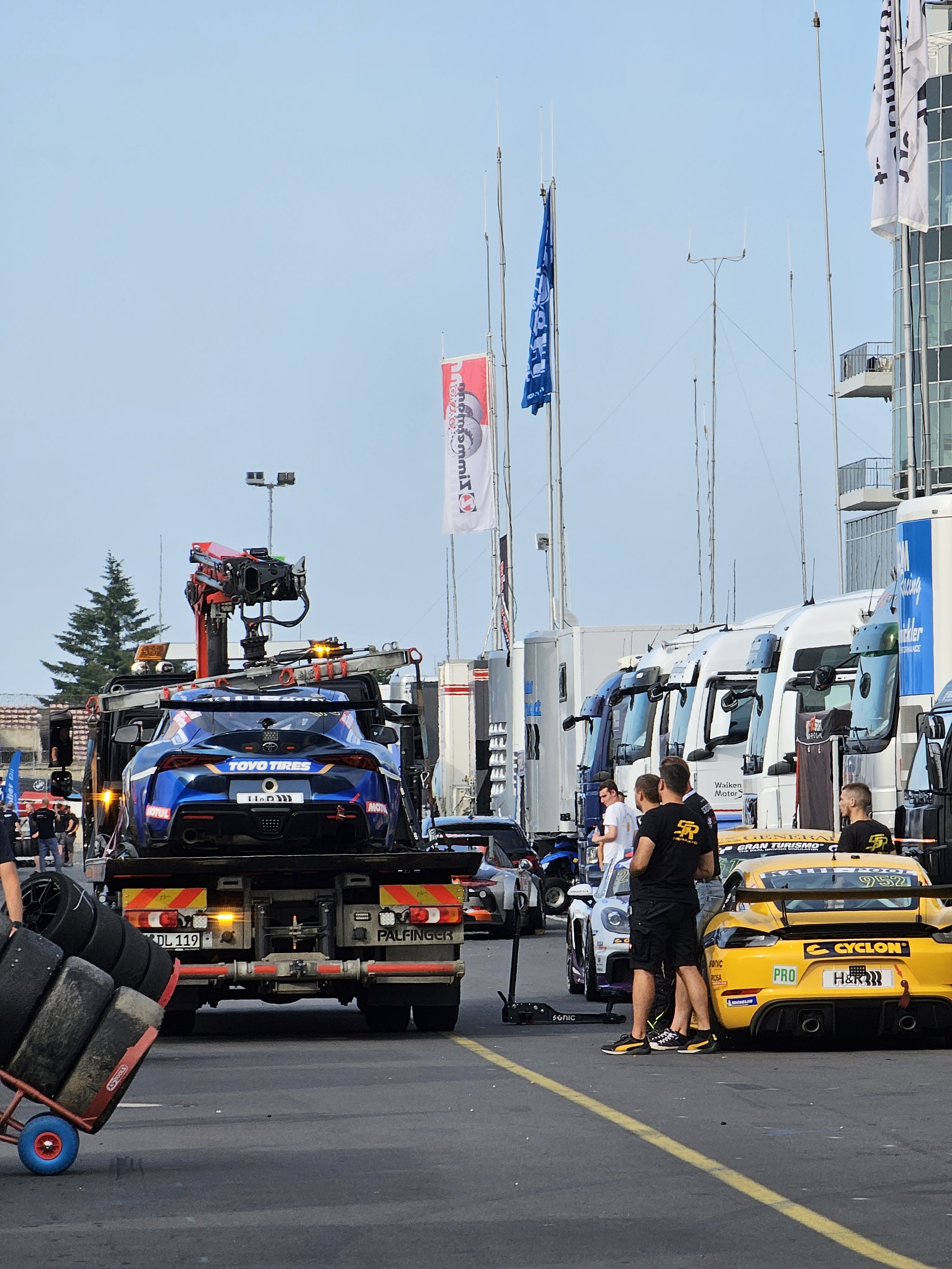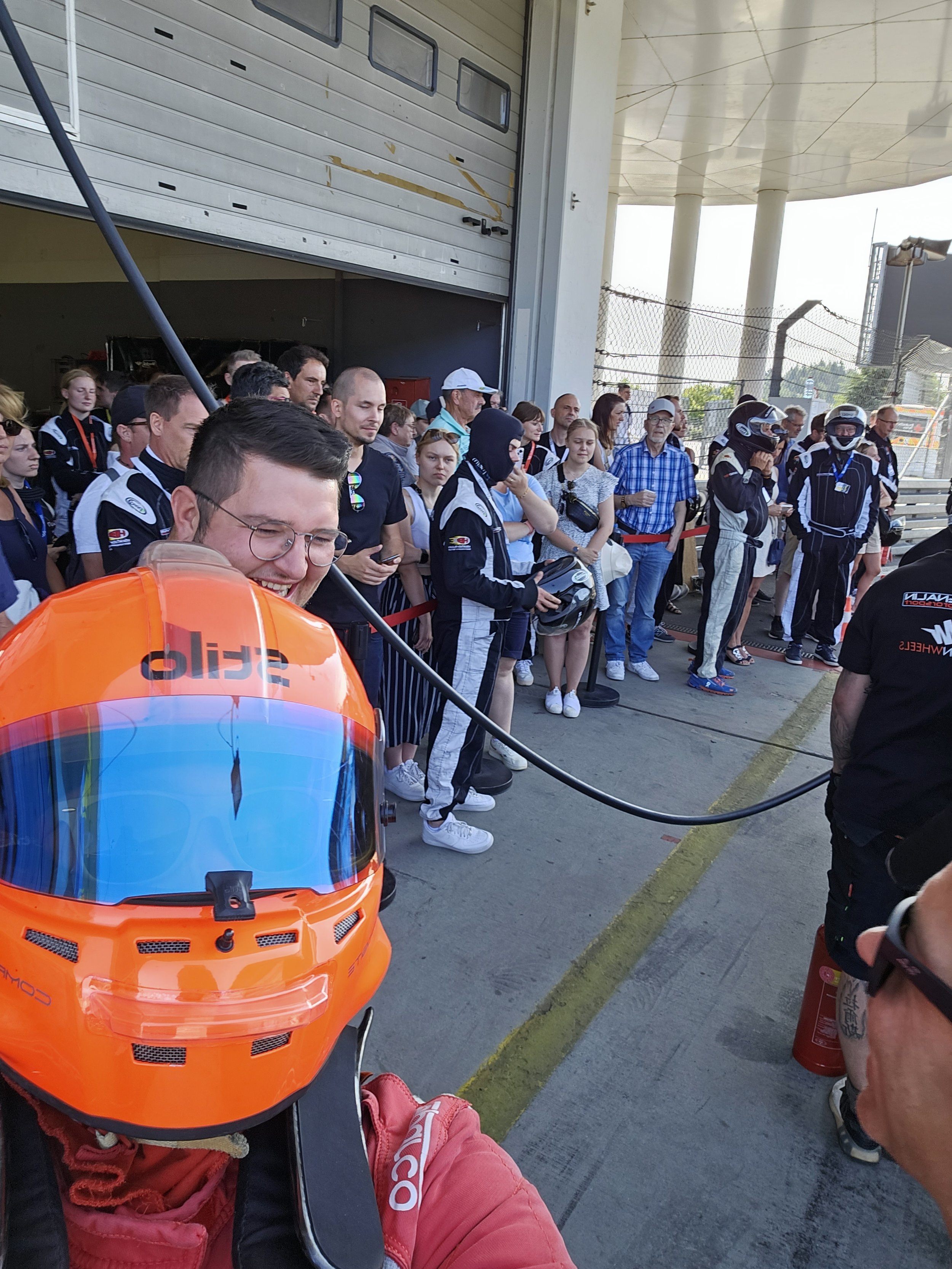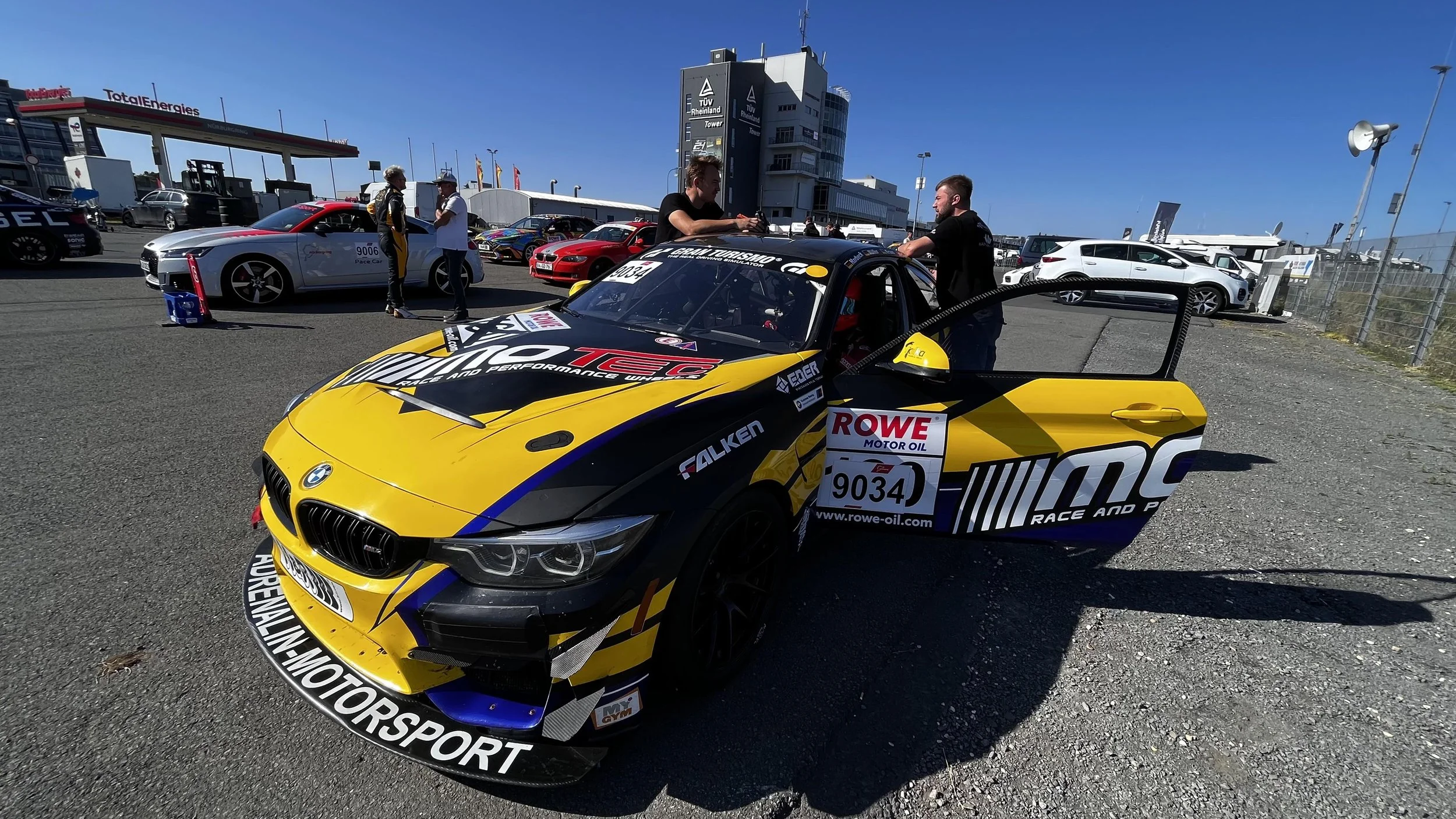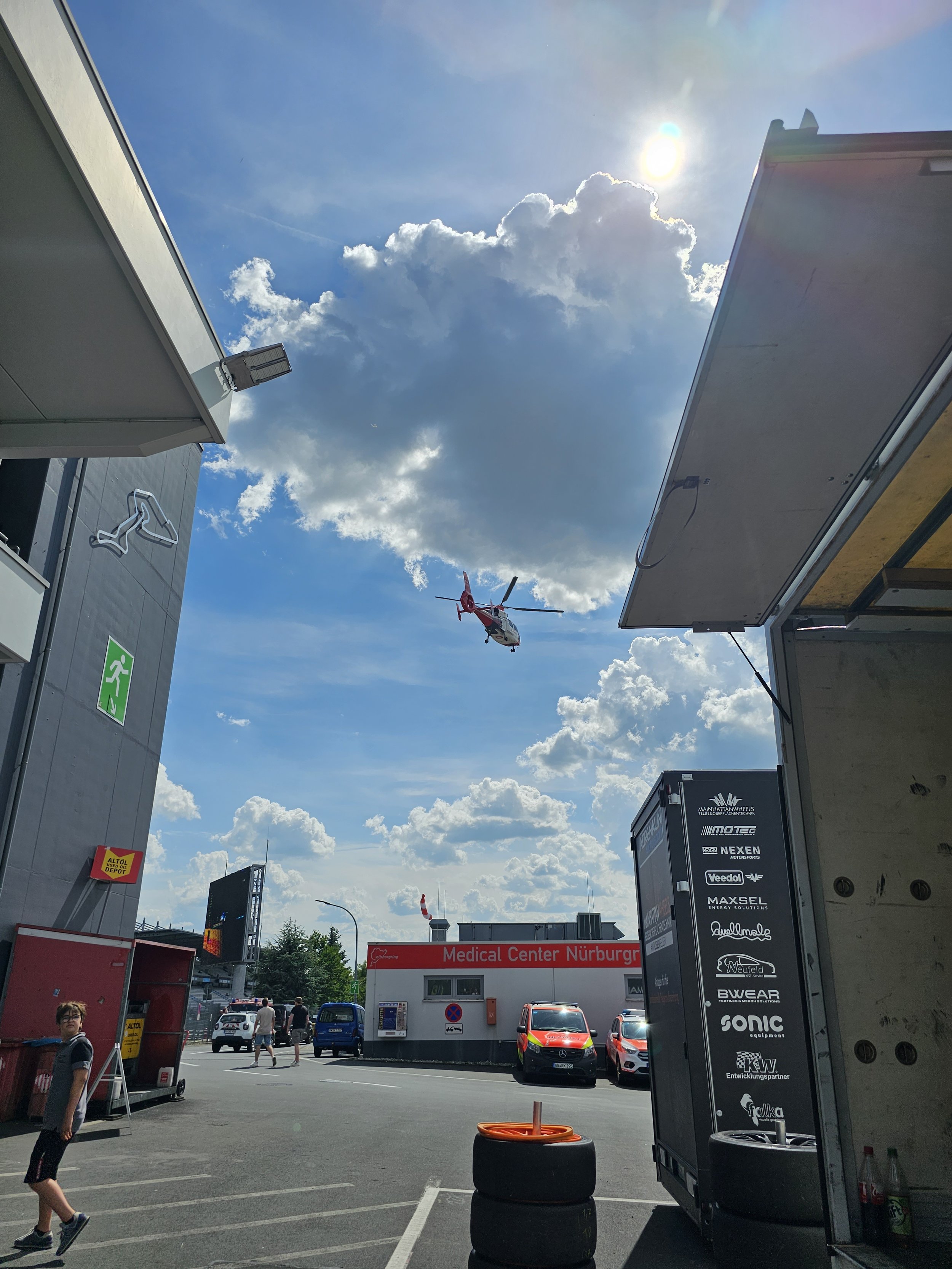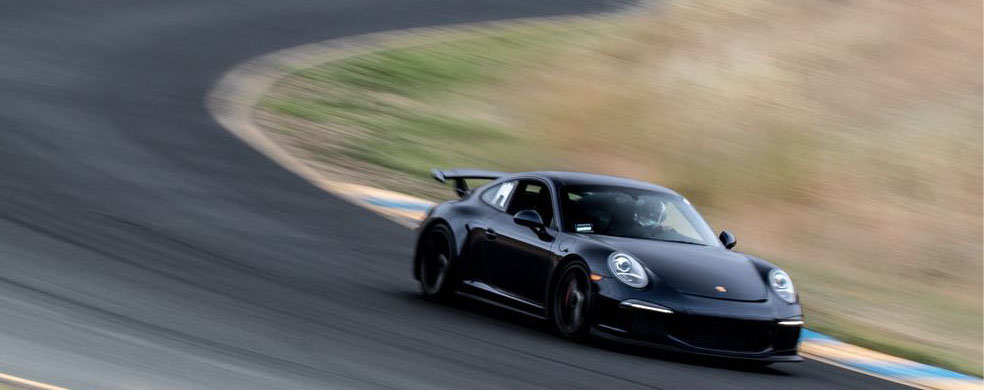
Joe’s AP1 S2000: Continuing Education
A couple years before forty, Joe Drane decided to finally give track days a try. Like with everything he’s pursued, he dove in with two feet and built a stunning S2000 in record time.
It wasn’t until Joe Drane moved out to California at the ripe age of 38 that he was able to try track driving for himself. Being a natural tinkerer and a bit of a hot rodder growing up, track driving had been a lifelong dream, but the opportunities for that sort of thing in rural Florida were few and far between.
After teaching him the ins and outs of network engineering, Joe started learning the cloud and found a few roles with startups in Texas. This created a focus on execution and continuous learning while also placing high value in data helped him put together a stellar resume in short time. This almost obsessive approach would later help Joe learn at a ridiculously rapid rate when learning the racing ropes.
The Land of Milk and Honey
After relocating to San Francisco to start a new role with Facebook, the assortment of beautiful sports cars lining the streets suggested he might be in the right place to learn to drive on track. He searched for ins on the pages of the local sanctioning bodies until he found an easier, more cost-effective way to dip his toe in the water.
Meanwhile, the need for a new outlet was getting harder to ignore. COVID weighed heavily on him, and while he loved his new job, it didn’t offer the distraction he needed mid-pandemic.
When he proposed running a few lapping days one weekend, his wife not only supported him in his decision, she helped him find an appropriate track car. Incidentally, the two had met at work after Joe spotted her leaving her S2000 in the parking lot. It only seemed right that such a car, the conversation starter, would help him start another love affair.
And so he picked out the cheapest first-gen S2000 he could find. This was several years ago, but even by the standards of the time, this car was affordable — and for good reason. “It was just a mess. It had no rear glass, the check engine light was on, the wiring was a rat’s nest, and the motor was ticking. I spent the winter restoring it, but I didn’t realize just how bad things were until I started working on it.”
Growing Pains
“I ran into some issues installing the aftermarket parts. The radiator wasn’t sitting low enough for the hood to close. I took it into the shop at BlackTrax to have it inspected, and there the mess continued to unfold. The radiator supports were bent, and I couldn’t purchase new ones anymore. I had to source the brackets from two fender cutouts from eBay.
Then we pulled the cylinder head and saw the valve retainers were cracked, there was a ton of carbon on the valves, and two of the cylinder walls were scarred. After ten track days, the transmission blew third gear. Oh man, what a nightmare it was.”
To mend the ailing engine and fortify it for track use, he replaced the block with rebuilt F22’s, then fitted a Radium catch can as well as Mishimoto’s radiator and oil cooler. Not eager to deal with another blown F-series, he wisely spent a few thousand more on a Link G4+ ECU to employ several failsafes and extract everything from the motor — mainly more mid-range torque and a peak of 227 horsepower at the wheels.The Link was then paired to an AiM MXG dash which to give him alerts and relay lap data.
Despite the early hurdles he had to cover, he remained willing and able to push on. The obsessive drive which fueled Joe’s career now had a second outlet; allowing him to research the engineering involved, pick parts, test them on track, and build a more supportive social network than the one which work provided him.
As it gave him a new lease on life, he didn’t hesitate to spend whatever was needed to turn this rough example of an S2000 into something exceptional. Within a few months, he’d added a long list of modifications to try and breathe some new life into this aging chassis.
After investing so much in the performance side of things, it made sense to apply an Inozetek wrap to help the car pop.
Among those additions were an APR splitter, a Voltex Type II wing, Rockstar Garage’s Feal two-way coilovers, and Stoptech C43 (F) and C42 big (R) brakes. Studying hours of onboard footage — namely Nate Hackman’s banzai laps — helped him understand just how much harder he could apply the brakes and how severely late he was getting to throttle.
In the interest of getting up to speed quickly, he skipped the cheap tires and went straight to a set of Yokohama Advan A052s, then wrapped them around a set of 18 x 9.5” Advan Gram Lights.
Though he’d already spent a small fortune on parts, never once did Joe agonize over expense during this introductory period. “I decided to pay for an education in racing since I feel it usually pays dividends,” he said. When his engine tuner Jei from BlackTrax offered to tag along to one HPDE at Thunderhill and teach Joe to study data, he jumped at the opportunity. “The telemetry revealed I was shifting a little too much, so we figured out the right shift points and instantly cut a couple seconds off my PB.”
The car was capable and reassuring enough for Joe to continue pushing, but asking more the car led to the standard Torsen differential failing. In its place, Joe put a Puddymod 1.5-way OSG and found the incremental improvement in power-down and stability motivating enough to invest in one other area that wasn’t quite up to snuff: dampers.
Joe knew the top-shelf option would make the car more quicker, more predictable, and less taxing to drive, so he splurged on a set of Blacktrax-built Penske 8300s. Even without much knob turning, the new dampers revitalized the car and helped Joe find the confidence to commit to the quick corners. “My favorite mod, without question. I dropped six seconds off my previous best the first time out on the Penskes. Worth every penny.”
Continuing Education
Learning to wrench and approach the track from a theoretical perspective helped him progress, but never having attended a racing school, he started to wonder if there were ways to improve his technique post-haste. He enrolled in a few drift courses to study the art of oversteering, and soon felt at ease asking the S2000 to rotate a little more than before.
Both his approach and the S2000’s setup are far from perfect, and Joe’s wise enough to admit that. “I haven’t thought much about adjusting the dampers — most of the time I just leave them in a neutral position and try to drive as best as I can.”
But the results from a relatively short time spent on track speak for themselves. He’s learned at a remarkable rate and, with a little more guidance from the knowledgeable group of friends he’s made recently, he’s bound to be fighting for podiums at the front of the S3 class sometime soon. He still has a few points to play with — and they’ll go towards a Zebulon rear wing, a larger Alumalite splitter, and Professional Awesome tunnels.
Joe’s studious nature has also helped him better understand the endless tradeoffs that building a track car requires. While the major cost associated with getting a rough car off the ground can eat into an aspiring driver’s budget, the peace of mind that comes from driving a flawed, imperfect car can help a driver push hard — harder than they likely would in a pristine example. That’s why he has no regrets taking the rocky but fruitful and informative path he took.
Aidan’s GT3: Vision Realized
Driven to realize a very specific dream built on years of tuning high-revving Hondas, Aidan decided that this 991.2 GT3 would have the subtle cosmetic touches to wow crowds and the high-end racing modifications to set seriously impressive lap times.
Photo credit: @z_stills & @tengerphoto
As Aidan Vo moved through adolescence, his affinity for cars carved out a prominent place for him in the San Jose drag racing scene. After he built an all-motor DC2 Integra capable of twelve-second passes, the big magazines came calling. This was the early 2000s, when the tuning scene was enjoying its biggest boom.
Through some of his drag racing acquaintances, Aidan eventually made the leap into road racing. Following his foray at Thunderhill, he started outlining a list of changes the Integra needed to become a corner carver, and for a moment, it looked like Endless might foot the bill.
So Aidan began disassembling the Integra and shelving the parts which wouldn’t do much good around a road course. Halfway through the teardown, he had a change of heart. He parted the car out, sold the chassis to another racer, and decided to hitch himself to the all-wheel drive wagon that’d just reached American soil.
It was in a Subaru WRX STI that really learned how to turn fast laps. His confidence bolstered by the safe, accommodating four-wheel drive, he earned his spurs in relative comfort. Then he switched camps and built a cost-no-object Evo X, which earned several magazine spots. Not only had he become well known and capable around a road course, he’d been rewarded for expressing his inner vision.
As his income grew, he started searching for a new platform. Something with a little more panache — something German.
The big Audi RS4 might not have been at home on the track, but the fit and finish of a plusher, posher machine did spark his imagination. There was something distinctive about it; something which resonated with Aidan and his appreciation for high style. The jump into the Euro market got his imagination running, but, unfortunately, that would be the extent of his involvement with cars for some time.
After living through the height of the tuner craze and enjoying all that the burgeoning market could offer, Aidan stepped away from cars to focus on his career and his growing family. All throughout this quieter interim, he couldn’t successfully quiet one part of his mind. “I missed that buzz; I had to create and build again,” he reflected.
Ten years of car-free focus had done wonders for his finances. Not completely car-free, however; he spent many evenings over that decade drooling over builds his younger self could never afford. When Aidan decided to return to his old hobby, he brought with him the means to realize a plan he’d held for a decade.
“I’ve always been captivated by the Porsche 911 since the 993 generation,” he began. “It’s always had a clean, restrained, understated design — that’s a big part of my aesthetic.”
A few weeks later, he rolled his new 991.2 GT3 into his garage, parked it, and pictured the finished product in his mind with all his planned modifications. The challenge he’d set for himself was considerable, but he had a clear plan and a few connections to help him along.
The Singer DLS was the one machine which inspired the build. “I’m not a Porsche purist who doesn’t believe in tinkering on their car. I see a Porsche as a vehicle that I can use to promote my vision.”
Knowing that the name Manthey was synonymous with Porsche performance, he did what all GT3 owners with grand aspirations for their build would do: purchase Manthey’s complete suspension, brake, and aero package.
There are only a few GT3s equipped with these parts in the Bay Area, and for good reason — one kit costs as much as a newish economy car. Most struggle to justify spending nearly thirty grand on Manthey-tuned KW dampers, solid bushings, brake lines, pads, dry carbon wing, as well as a Cup car’s front splitter, but the resulting crispness and composure is worth it to those with discerning taste and deep pockets.
Perhaps the one downside was that, for all that money spent, the car didn’t look much different than it did prior to the modifications. With so many Porsches looking so similar, Aidan decided to give a nod to the Porsche styling of yore by replacing the factory GT3 wing with a Porsche Sport Design ducktail. He learned shortly after just how difficult it would be to swap out this piece, retain all functionality, all while using OEM Porsche parts — and only OEM Porsche parts.
A hundred calls to local dealerships resulted in the same sad message: “on indefinite backorder.” It took months of perusing before he found an appropriate ducktail from a local owner looking to return his Sports Design-equipped car to stock, but he finally found the part. With the ducktail in hand, he felt as if the build were gaining a momentum of all its own. “Finding that part gave me the confidence to continue doing things the way I want to do them. Everything happened so organically, it almost felt like destiny.”
It’s subtle, but it sets it apart from the rest of the winged GT3s driving around San Francisco.
Of course, the body and the engine underneath would require several tweaks to accept the new boot-lid. Aidan had to source a 911R intake, 911R engine cover, the hinges, every nut and bolts and the oil return lines to allow this new body panel fit snugly. Unfortunately, What would seem to be a simple swap took months and countless emails.
The tradeoff was obvious. “The ducktail definitely makes less downforce than the original wing, which I learned when trying to go flat over Turn 1 at Laguna Seca, but it helps with rear visibility.”
With used 911-money spent on the suspension, it would only make sense to do the same with the powertrain. With Dundon Performance on the phone, Aidan specced out an engine package that would uncork the power of the 991.2 GT3, more mid-range torque and a top-end that reminded him of some of his fastest Hondas.
Dundon provided him with an intake, throttle body, plenum, and headers. JCR provided their titanium race pipes and titanium exhaust tips. The combination of these parts together allows the car to scream like an RSR at redline while keeping a deep, sonorous growl at lower revs.
With the way the GT3 was evolving into something like a racing car, Aidan decided to try and give his car the front track and aerodynamic grip of its race-only sibling, the GT3 Cup. He rung up his contact at Manthey and ordered the primered fenders, flares, splitter, bumper, and crash bar from a bonafide 991.2 Cup car. His painter Jesus matched the new parts perfectly and even achieved OEM paint thickness.
And now Aidan has something that is undeniably his own. Even if it were for sale, his buddies would never attempt to buy it. “‘It’s so obviously his, I wouldn’t ever feel like I owned the car,’ one of my friends told me.”
But is it a show car or a track toy? Aidan doesn’t believe there needs to be any distinction between the two. He’s made steps towards having both distinguished looks and serious performance, and all that he’ll need to do to suit his mood is change a few bolts and reorient the engine fans.
“As pretty as the trunk is, it definitely lacks downforce compared to the Manthey carbon wing. I’ve planned ahead to regain the downforce we all crave at the track. I have a Cup decklid and wing ready for track days. That arduous ducktail swap was done specifically to allow swift decklid swaps when it comes time to take the GT3 back to the track. All you have to do is reorient the fans to fit the subframe brace. After that, you’re off to the track.”
At this point, he feels he’s nearly realized his vision. Aidan cannot see himself selling the car, but that doesn’t mean he’s going to make it a collection piece. Instead, he’ll put it through its paces, enjoy it as both a driving tool and a rolling piece of art, and hope that his commitment and the car’s obvious quality will inspire the next generation of speed freaks with an eye for design.
Passing Etiquette: Making Space and Saving Face
Passing and braking are the last two things a driver learns to do well. We’ve broken down a series of basic rules to follow to help learn how to make the pass stick and how to do so safely.
Photos (unless specified otherwise): Trevor Ryan
Overtaking is a tricky business, and learning how to pass decisively and safely takes time and practice. It pays to err on the side of caution — especially with unknown drivers. After all, squabbling for position isn’t the most judicious thing to do when there’s no prize on the line. Nobody wins a track day.
As a general rule in racing, the overtaker must present themselves alongside the driver in front — typically with the overtaking driver’s front wheels ahead of the overtaken driver’s rears before the turn-in point. This way, they’re able to see the other driver through their peripheral vision. Studying one’s surroundings and knowing where other cars are at all times is necessary to become a capable track driver.
It pays to be seen. Credit: CC-by-2.0/MIDWST.BLUR
Of course, this is a rule followed in wheel-to-wheel racing. With Speed SF, the passing car must have its front wheels in-line with the passed car’s front wheel before the beginning of the braking zone if they want to attempt a pass. It’s worth giving everyone a little more room since nobody can truly win at a track day, after all.
Our aim is to give all our drivers their own space and help the faster drivers safely navigate the slower traffic so nobody gets held up.
To give assertive advanced drivers the leeway to pass freely while allowing novices time and safety to ease their way into it, we have outlined some hard and fast rules for our various run groups. For those groups with stricter passing rules, like Green and Blue, the process of passing is made as simple as possible.
Novice Group (Green)
Responsible novices dedicate most of their mental energy to driving their own car, so they likely lack the bandwidth to watch their mirrors while driving. For this reason, we only allow passing on the designated straightaways — never through the middle of a corner — to simplify the mental burden. The courteous driver being passed should lift off the throttle to make life easier for the passing driver. This really helps when overtaking in a Miata.
When the driver being passed decides to lift off their throttle, they give the passing driver more room to complete this overtake prior to the braking zone, which is our second requirement. The passing driver should not be pressured into squeezing themselves down the inside at the turn-in point. Just because someone, especially a novice, gives the point by does not mean that a pass is possible; the passing driver must carefully judge whether it is going to work. If it’s doubtful the pass can’t work, back off — nobody wins a track day.
Keep an eye out for that point-by. Credit: OpenTrack
Generally speaking, we like the driver being passed to allow the passing driver to rejoin the conventional driving line before turning in. If they insist on turning into the corner from an inside line (ie. a line closer to the apex than the standard line), they must navigate a shorter radius and therefore reduce their entry speeds accordingly.
Because the novice’s situational awareness isn’t as great as a regular who instinctively checks their mirrors, we require the passing driver to wait for a specific gesture from the driver ahead. By leaning their left hand out the window (or right in a RHD car) and pointing at the portion of the track they’d prefer the overtaking driver to use while passing, they give a sign of recognition and avoid confusion. Wait for a clear signal, and preferably before a longish straightaway — it’s safest and easiest to pass there.
Intermediate Group (Blue)
Even with their experience, we want members of blue group to follow the same passing rules as the members of green.
HARD RULES: GREEN/BLUE
Point-by passing is required at all times. Under no circumstances is passing in the corners allowed, and passes along the straights must be completed before the braking zone.
Point-by Recommended/Mixed Group (Yellow):
After a dozen days or so, driving alongside others at a quick pace is no longer terrifying like it once was. We try to encourage these drivers to be assertive with their car placement so as to begin the two-part process of an advanced pass. Both parties must be aware of one another, and as long as there’s enough room to overtake safely, we allow passing without a hand signal. Though a point-by is still recommended to make sure everyone is aware, it isn’t required.
There are other ways to communicate reaching an arm outside the window. For instance, the driver being passed taps their rear-view mirror prior to the turn-in point (a common acknowledgement). This indicates that the driver attempting the pass is seen and will give way. The driver ahead can also offer a corner without signaling by slowing than necessary before turn-in, usually off the ideal line. If the driver behind sees the “door opening” and the driver ahead taking an odd line slowly into the corner, they will know they’ve been given a chance to pass.
When overtaking and turning in on a tighter line, remember more braking pressure (if braking is necessary) is likely required.
HARD RULES: YELLOW
The fundamental skill required to run in this group is strong situational awareness. Drivers are allowed to pass anywhere, but only at a moderate pace. Point-by passing is recommended, but not required. Exercise caution and make sure to read the driver ahead before attempting a pass.
Open Passing Group (Red + Gold):
Highly experienced drivers aren’t protected by such rules, which means they need to read the subtler signs of a driver giving way, learn how to pass decisively, and how to present themselves so as to be seen.
To run successfully in the Open Passing Group, you must know how to improvise with car placement while keeping the general level of grip in mind. Even while driving through a corner side by side, both drivers must be able to react and, hopefully, anticipate the other’s move.
Limited visibility and reduced grip make overtaking in the rain even more challenging. Remain patient and, due to the tricky conditions, avoid forcing the issue.
Of course, open passing doesn’t mean fighting for position like it would in a true race setting, but the increased level of competition typical in this run group
Assuming both parties can recognize each other’s position on track and drive in harmony, these sorts of overtakes can be done safely. They do, however, require a good deal of spatial awareness, decisiveness, car control, and forethought. For that reason, we only allow drivers with over twenty track days under their belt (or those holding a racing license) to join this group.
HARD RULES: RED/GOLD
Twenty-plus track days or racing license needed to partake. Must be experienced with open passing. No passing restrictions as long as drivers exercise good judgment.
Final Thoughts
Cooperation is the name of the game, so try to wait until a definite sign is given before attempting a pass. Make sure there’s adequate grip available to take a tighter line than the conventional line if that’s what the situation requires. The tighter the line, the more deceleration prior to the corner is required. Trailbraking helps here.
If a train of cars ahead makes life difficult for a faster driver bringing up the rear, they’re advised to pit momentarily to establish a gap. This makes life much easier and offers a better chance of achieving a personal best.
When deciding whether or not to attempt an overtake, remember that the passing car is always responsible for ensuring a safe pass. Even if the car ahead closes the door on the driver behind, it’s the latter’s fault. Leave a little space whenever possible and never squeeze somebody on a track day.
Keep eyes up at all times, scan the environment for faster and slower cars both and behind, and try not to fixate too much on rolling speed into the corner during an overtake. Instead, prioritize a strong exit. Well, the beginners should try to do this to avoid sliding off when overtaking on the inside. The experienced drivers know that, in racing, sometimes getting ahead of the driver in front is all that’s needed; an overtaken driver can’t always respond if the overtaking driver exits the corner slowly. Again, that’s racing, and this is track day driving, where the objective is to bring the car home in one piece.
Lastly, remember that there’s nothing to win here. Track days exist to help people gain experience running independently, so giving way to a faster driver when they’ve demonstrated superior speed is a mark of maturity. Yes, it might sting, particularly if they’re in a much slower car, but leave some room for humility and open the door — following a faster driver closely can be the best sort of instruction anyone can get.
Hubert's MKIV Supra: Soft Spot
After failing to find an E30 M3 to begin tracking, Hubert decided he’d get his HPDE start in a fourth-generation Supra Turbo: the slinky grand tourer he fell in love with during his teenage street racing days.
Like Ken Yu, Hubert Chan first got a taste of speed on two wheels. His motorcycling antics with his cousin Wil sowed the seed, but it wasn’t until one of Wil’s dearest friends gave Hubert a taste of acceleration that made even a 600cc bike feel a little lackluster. The stoplight-to-stoplight sprints in Phil’s modified fourth-generation Supra Turbo had Hubert hooked. “It just never stopped pulling,” he said.
However, Hubert wasn’t pushed in the direction of drag racing — he had an affinity for corner carving. An E30 M3 seemed to him the coolest cornering machine in his price range, but he struggled to find the right one. Eventually, he decided another platform might be more accessible, so he gave the big Supra a chance. This was 2013, back when both these iconic cars cost half of what they do today.
The Supra had left an indelible mark on him, and though not many had taken them to the track, his knowledgeable friends signed off on the Supra as a worthwhile sports car. When Hubert found the online listing for a clean, reasonably priced, and unmodified 1994 Turbo, he bought a one-way ticket to Salt Lake City and drove it back to the Bay, dreaming of future modifications the entire way.
The Supra Turbo had proven itself as a stellar road tripper; comfortable, quiet, and still torquey enough to pass anybody quite easily. However, it was a little on the boaty side, and Hubert sought out a few ways to improve the footwork.
First came a set of Fortune Auto 500 coilovers, and the resulting agility proved that the car was more versatile than its reputation had led him to believe. The Supra’s long wheelbase didn’t feel like an encumbrance on tighter backroads, and the way it sat securely over bumps and cambers made it quite confidence-inspiring.
The foundation was there for more power, which Hubert always knew would be the most exhilarating part of tuning this new toy of his. The promise of easy horsepower encouraged him to amass a large collection of engine parts over the course of the first year. By the time he’d had it for twelve months, he was ready to move onto the second chapter and double the power output.
With the help of mechanically-inclined friend, they pulled the factory turbochargers and replaced them with a log-style cast manifold and a Precision 6266 turbocharger, then fitted Kelford 264° cams and a full 3” Tanabe Medallion Exhaust. With some meth injection and a safe tune of the AEM V2 from Lawrence Shipman, the motor made a healthy 580 horsepower on 91 octane.
With the way the Powerhouse Racing turbo kit emphasized low-end torque, it became challenging to turn that into propulsion. To address the wheelspin issues, he followed the forum recommendation to replace the factory torsen with a TRD 1.5-way differential and increase the rear tire size to 295s, which he was able to do via widening the factory rear wheels.
For the final touches to the footwork, Hubert had consulted the Supra community for an appropriate sports alignment, but upon taking it to Elite to have it aligned, Melody Cannizzaro suggested a few alterations to his provided specs. With additional toe-in at the rear, the Supra felt reassuring and stable; enough so that Hubert was comfy stepping on the throttle in second and third gear. No longer was he hindered by the big torque, which gives relatively little warning before it hits.
The Supra had established itself a capable cruiser and a competent canyon car, but Hubert was most interested in seeing what it was like in an environment where he could really stretch its legs. It wasn’t long after that his friend Janning encouraged he take the Supra to Laguna, where he met his friend Samson, another track driver who’s been instrumental in getting Hubert up to speed.
After a few spins and some big slides, Hubert began to get a sense of just how much of the power he could use in Turns 2 and 11. The power must be applied gently in the slower corners, but it will put the power down in third, assuming the car is mostly straight. “The car was definitely driving me that day, but I didn’t care. I was addicted!” he exclaimed.
Over the next few events, Hubert began addressing the handling problems only apparent after a few fast laps. It was still a little too floppy from factory; the annoying targa top would flex to the point of requiring readjustment after every session.
Hubert parked beside his friend and mentor Samson’s M3.
Titan Motorsports’ four-point rollbar, reduced the flex and the need to fiddle on the targa between outings. Still, it remained too soft to transition crisply, so Hubert installed a set of SuperPro polyurethane bushings at the critical points in the suspension, Titan anti-roll bars, and a TRD strut bar. It’s tauter than it’s ever been, but it’s still a little on the comfier side. As a car which sees more street duty than track action currently he’s content with the setup.
Its ability to cruise to and from the track in total comfort isn’t something he’s willing to forgo in the name of going faster quite yet. The power is more than adequate, the car is controllable, and the engine doesn’t show any signs of stress. Essentially, it’s barely breaking a sweat with such limited lapping.
“I’m happy with the Supra in its current state for now, but once I get a little more comfortable pushing it, I might improve the brakes and the suspension.
It’s just an easy car to live with, and I’m afraid of ruining that. Plus, it gets so much attention in the pits. Some people ask me why I risk driving such a rare car, but I think it’d be wrong to keep it in a garage. Most people think it’s only good for drag racing, but the Supra is a great performance car — it’s very much at home on the track.”
Speed SF Challenge Laguna Seca: New Surface, New Records
New pavement and stellar weather meant our fastest drivers pushed harder than ever before at our latest Speed SF Challenge event.
Ideal weather and a massive turnout of thirty competitors at the last round of the Speed SF Challenge guaranteed some action. Sure enough, we saw new records in several categories. Though some of the newfound speed was due to the recent repave, our Challenge drivers were in stellar form that weekend, and their onboards prove that.
In S1, Steve Melson and his Audi R8 broke the S1 record that had been standing for five years, set back in 2018 by Andrie Hartanto in a C6 Z06. Steve took advantage of the stellar weather and logged a 1:34.081 — a new record that any driver should be proud of—in a car that looks nearly stock. Such is the performance of the second-generation R8.
In S2, Kai Anderson reset Peter Hsu’s Chevy Corvette record by seven tenths. Anderson ran a 1:34.8 to Hsu’s 1:35.7, but not before suffering through a few frustrating sessions. By the end of the day, he cooled his jets long enough to find a gap and avoid slower cars. “My main challenge was recovering from a poor qualifying. There was a good turnout for this event which was great, but it meant the morning sessions were a little crowded, so I ended up only qualifying 7th fastest overall. I recovered to 4th fastest overall in the Challenge session, so mission accomplished, but my fastest lap didn't come until lap 5 because I kept having to abort laps due to catching traffic.
I didn't really have any specific goals for the weekend; mostly just evaluating what is still a relatively new car to me on a newly resurfaced racetrack. Overall, I was impressed with both. I think the changes to Laguna really inspire confidence to push for that optimal lap without creating a different line that requires total abuse of track limits.
The Camaro is perfect for Laguna, with prodigious power, cooling, and brakes to match. There is definitely still some laptime to come from this pair. Crossing my fingers December is dry!”
In S3, Spencer Kimball put in a serious effort to try and beat Kevin Schweigert’s S3 record of 1:36.0.
“I went into this event with some reservations knowing that my M3, with limited torque, was not at its best on Laguna’s straights. Laguna is also the one local track that I drive the least, but I made sure to try and get some practice in before the Challenge weekend. I lucked out and a friend lent me his pass for an event the weekend before, where I ran a low 1:37 after a year-long Laguna hiatus. I looked over my data and saw that a mid-35.xx would be possible, but I went into the Challenge event with the goal of breaking into the 36s.
I knew that I had my work cut out for me as my main competition, Legend Brandenburg in his A90 Supra, benefits from ~200 more ft/lbs more than my E92 has. Luckily I was able to run a mid 1:36 during sessions 1 and 2, which put giving me a good spot for the challenge session. I studied my data to figure out where I needed to commit, and it was clear that the faster corners were where I could push harder to find somet time. I ended up running a 1:36.5 in the Challenge by carrying more speed through T5, T6, and T8, which was enough to make me the fastest in S3.”
In the end, Kimball was just 1/2s off of Schweigert’s lap, which Schweigert set in a car weighing 500 pounds less with comparable power levels. Not too shabby.
Gary Wong still has a little bit of work to do in the Supra to find the second between him and Dave Colbert’s 1:31.5 Group X record. The infamous purple Supra had its engine tweaked slightly to reduce power cuts, but heat is still an issue which Wong has to deal with. Thankfully, the team has a solution—though they won’t be able to use it until the next weekend.
“It was a fun weekend. I mainly wanted to sample the new track surface and see where I could push more than before. Because of how bad the stupid bump at T1 is, I wasn’t able to hit our sub-30 target times, although that had something to do with to traffic and some electrical gremlins. Because of some overheating issues, we had to lower the power level to complete the full lap. Thankfully, we know the issues and the solutions and we’ll come back stronger.”
Gunning for the S4 record, Nate Hackman’s put in an incredible 1:39.7, less than one-tenth off of Sean Yepez’s record, in what appears to be a very mildly modified car without any aerodynamic goodies. The primo parts are under the skin, though: his Ohlins TTX coilovers help his S2000 handle better than most. A last-minute setup change reduced some of the oversteer in the car, so Hackman could commit to the faster corners easily.
“Up until that weekend, I had only mustered high 41s at Laguna. With the repave running faster and a few changes to the car I figured I'd run a second or two faster, but tried not to overthink it with goals and just go have fun. Luckily, I was able to cook off a number of 39s with some definite room for improvement. I was still a tenth off Sean's pre-repave lap record which was a little disappointing, but I knew he'd come back and crush any record I set, and was still very happy to crack into the 39s with no aero and take home a win with an underbuilt car.”
In S5, Tony Rodriguez’s 1:45.2 record seems untouchable. Maybe we need another all-out MR2 to chase Rodriguez’s old S2000 down. In the meantime, we’ll have to tip our hats to our talented drivers taking advantage of the new pavement and pushing themselves hard enough to keep all the Speed SF Challenge competitors on their toes. When times continue to tumble like they have been, none of the Challenge competitors can coast, boast, or rest on their laurels.
Speed SF at the Nurburgring: Podium Performance at NLS Six-Hour Enduro
Patrick Chio wasted no time getting ready after Andrie Hartanto invited him to partner him in a six-hour RCN enduro at the Nurburging. However, the mountain of paperwork, broken cars, and technical problems didn’t fully prepare them for the dramatic end to their impressive debut.
It didn’t take much to persuade Patrick, but the workload required to get all the way to the Nurburgring and race a six-hour enduro had him wondering if it was all worth it.
The challenge prior to getting on the plane to Germany had been monumental, and it wasn’t going to get any easier once they touched down.
Five years earlier, Andrie had competed in a handful of VLN races at the Nurburgring, and, being a bucket-list item for Patrick, the two decided to partner for a six-hour race in the NLS Endurance Series. With a friend who knew the European racing landscape and a renowned team to join, Patrick could feel optimistic about this next step in his racing career, but before he could start to think about driving the course, he had to make his way through the long checklist that every eager American must complete before racing at the Ring.
“I’d only driven it on Gran Turismo before. Never on a real simulator,” Patrick said.
Applying for an FIA license as an American requires a calm, patient temperament. As is requested, “ten races completed in the last two years” sounds simple enough initially, but it can get more complicated. For whatever reason, the FIA doesn’t consider NASA a legitimate sanctioning body, so Patrick’s two full seasons of WERC and his two 25 Hours of Thunderhill did not count towards his total—initially, anyways. Luckily, due to the pandemic allowing older races to count, his SCCA Spec Miata races in 2020 could count towards his total. He was granted his FIA license, but he still had to prove himself for the Nurburgring for a separate test, another permit, and a few headaches.
Once at the Nurburgring, Patrick and Andrie linked with their team, Adrenalin Motorsport, and Patrick jumped into the car to drive his first real laps of the Nurburgring.
Patrick partook in the DPN test, which judges drivers on theory first, then has them run eight laps with an instructor, as well as eight laps alone. No passing under yellows, no offs, no holding up faster traffic, and none of the tentative driving that any driver, even a seasoned driver, would exhibit during their first few laps of the track. For the test, Adrenaline lent Patrick a race-prepped F82, which kept him alert. On a push lap, the car jumps and skips over the track, which is much bumpier than any Playstation rendering conveys. “There are a few places where the car is flying through the air,” Patrick laughed. “Narrow, fast, and many blind corners—it’s pretty intimidating in a fast car.”
The car had its issues. Mainly, the windows had to be kept up for the majority of the lap so as not to blow out the rear plexiglass when the car reaches over 250 kph down the Dottinger Hohe front straight. Thankfully, the rolling sauna session didn’t last long, on the third lap, the car lost power and stalled. The vehicle had to be towed back to the paddock.
There, they had an M4 GT4 ready for him, which lifted his spirits a bit. “A factory race car is just a different animal. Going through the compression, it gets sucked to the road by the massive aero. The motorsport ABS is incredible. The F82 was moving around everywhere over the bumps, but the M4 was so stable. It had really good air conditioning, too!” he exclaimed.
After another thirteen restrained laps, he rolled in and reported to DMSB, the licensing unit, and awaited their decision. He’d passed. Now, his DPN B-level permit entitled him to race at the ‘Ring, albeit in a certain range of cars.
With all the different nuances present, Patrick wasn’t certain they would do so well against the local drivers. Between the Nordschliefe and the GP track, there are over 154 corners, and twenty laps is not enough to learn them all. At least he had six hours ahead to learn them all.
CAPTION: To complicate matters, the team engineers expected him to learn the corner names so he could relay data back and forth more easily.
The following morning, they returned to the track, now swarming with a throng of spectators. There were 130 cars on the grid, and a few thousand spectators ambling in between them. During morning practice, the team would stick the interested fan in the passenger seat as Andrie or Patrick got to terms with their new racing car.
Patrick and Andrie would be driving an M240iR in the M240iR Cup class. Friendly, progressive, and a little oversteery, the M240iR, as Patrick said, “drives a lot like an E46 M3, but at factory level performance.” The extra weight and power wasn’t really a hindrance, as the team swapped tires after every 1.5-hour stint.
They threw a set of stickers on before qualifying, which all drivers must participate in. The format is fair and straightforward: they don’t take the averages, they just take the fastest of the two laps every driver is mandated to run. They weren’t too worried about being at the front of the grid, because the Nurburgring always has yellows, but they still pushed the little two-series as quickly as they could.
“One of the most difficult aspects of this race is that we have to share the track with the faster GT3 and GT4 cars. These factory race cars are so fast in every aspect, when most corners of Nurburging are blind, it’s really hard to see them coming up behind or next to you” Andrie said.
Andrie qualified fifth, and at the start he made it up to third, but it wouldn’t last. Due to an ambient temperature of 90°F and a lack of cooling from following closely behind in the dirty air, the M240i’s turbocharged motor went flat after half a lap.
“I lost power! I lost power!” Andrie screamed over the radio. The team issued orders to short-shift at 5,000 revs, and Andrie obeyed, but fell back to tenth in the process. By the time the car had cooled, he started to charge again and brought the car back to sixth, then handed it off to Patrick, who climbed into fifth and stayed on the same lap with the leader.
After his steady session, Patrick brought it back to the pits, where they lost only one position. Things were starting to look up. The race wasn’t halfway over and the two were starting to feel at home at the neverending circuit.
Andrie got back in for the third stint and started flying; lapping faster than the third and fourth-place cars and dragging it up to fifth. He was eyeing fourth place by the end of his stint.
As the stint progressed, Andrie was making his way towards Fuchsröhre, a steep downhill chicane section with a frightening compression at the very bottom, where they were going over 240kmh. He noticed a dot in his mirrors growing larger. “He’s gonna catch me sometime after the compression,” Andrie assured himself after seeing the GT3 flashing its lights. Andrie focused on the technical section ahead; getting his line right, straightening the car before the bump, and braking hard as he shot uphill, thinking he had more time to handle the GT3.
“I figured he was going to pass me after the corner, but he didn’t. I was startled to see him next to me at the turn-in point. We were both doing about 240 km/h.
When Andrie started to turn, he could see the lights from his peripheral vision – the AMG GT3 driver was already beside him. Andrie wanted to slow the car, but because of the crest, he released the brake and tried to scrub some speed through the middle of the corner. Unfortunately, he was going way too fast at the wrong trajectory, so his front right grazed over the grass. At over 200 km/h, dropping a wheel mid-corner can be costly, and Andrie slid into the barrier. He hit it front-first at about 45 degrees, then the rear contacted, and then he ping-ponged across the track, somehow without flipping.
Shaken but steady enough to walk, Andrie got out of the car himself and walked over to the marshal’s stand, where they called a doctor. The doctor determined that, because Andrie had crashed at over 180 km/h, they would airlift him to the hospital.
At Koblenz, the CT scan showed an uninjured brain, but the doctors were reluctant to let Andrie attend the barbeque he had been invited to. Both parties bickered for a bit, then the doctors capitulated. “You’re free to go as long as you have some friends accompanying you,” they said. He signed the waiver and left to bury his frustrations in pork.
Patrick and Andrie weren’t the only duo which didn’t finish. “I was a real shame — we had a chance of a podium here. At first, we didn’t think we’d do so well against the people with more experience here, but we had a very good team behind us who gave us lots of confidence,” Andrie lamented.
Still, that was a minor ache for all the good that came from this trip. For Patrick, it was a seminal accomplishment. To fly across the Atlantic, earn another license, and leave with podium promise is not something that happens to often.
More than that, it gave him some insight into the world of professional European motorsport. “Getting to meet professional racers, talk, and see how we compared, plus being close to all these big manufacturers—it seemed like a dream. Also, Nurburg is small and filled with people enthusiastic for the sport. You can make friends with other racers in the parking lots, in the restaurants, everywhere!”
For track day hobbyists back in California, sometimes getting to the Nurburgring can seem like a dream, but, as Patrick learned, it’s not too difficult for someone looking to turn a few laps. “There are so many rental agencies around. You can just rent a car and go. It turns out it’s really convenient—you don’t even need to book a trackday on the touristenfahrten days. You just pay for the car, pay for a certain number of laps, and you swipe your card at the gate, and drive as hard as you can.”
When he puts it that way, it makes the journey seem less daunting. It always helps to have someone pave the way for you.
Sonoma Logistics: Where to Stay, What to Eat, What to Wear
With a unique rhythm, great amenities, and amazing food and lodging nearby, Sonoma Raceway is one of the most popular destination tracks on our calendar.
Being my home track, Sonoma Raceway elicits many fond memories. Back when it was called Infineon, I got to see real racing cars in action for the first time, and with the sun setting at the end of the day, I realized just how special this place and this sport are.
For both the driver and the observer, it’s an amazing place to be. The variety of fast and slow corners, all tinged with a little fear from little runoff area, promotes a rhythm that is hard to experience at any other American tracks. It’s not an easy track to master, however. The morning fob can render the curbs slippery, and there are track undulations that can upset the weight balance of the car. Combine those with minimal runoff, and you realize how important it is to be careful exploring the limits there. “Take your time learning the track,” George Koustoumbardis warns.
Plus, the ambiance is special. The views from the top of the hill are remarkable; it’s not often you get to see most of the track from a single vantage point. The weather, too, is fantastic—outside the hottest summer months, anyways.
Navigating Turn 1 at ~100+ with the walls on either side takes some courage.
The onsite amenities deserve some praise. The onsite Wine Country Motorsports provides all the gear necessary, and the wide range of fuel available — 91, 96, 100, 112, 114, & 116 — make easy refills with exotic racing engines easy. Plenty of garage spaces help keep people out of the sometimes-oppressive sun, and with a moderately small footprint, the track is not too tough to navigate. However, with a small lot comes competition for parking spaces, so make sure to get there early if you’re trailering a car.
An airy paddock and small parking lot makes Sonoma nice to wander around.
It’s also located in a fantastic area. Whether you’re taking a quick day trip to the track or looking to spend an entire weekend basking in the Napa Valley glow, there are plenty of things to keep in mind.
First and foremost: try to avoid San Francisco if at all possible. Yes, early morning traffic on the weekends isn’t too heavy, but even so, it’s difficult to get to Sonoma in under forty-five minutes on the best of days. Instead, try staying in nearby Marin or Sonoma, where the food is fantastic and the atmosphere is far more relaxing.
Recommended Hotels
MARIN COUNTY
Best Western PLUS, Novato Oaks Inn 215 Alameda del Prado Novato, CA, 94949 (800) 625-7466
Best Western PLUS, Corte Madera Inn 56 Madera Blvd Corte Madera, CA 94928 (800) 777-9670
Courtyard Novato Marin Sonoma 1400 Hamilton Pkwy Novato, CA 94949 (415) 883-8950
Four Points by Sheraton San Rafael 1010 Northgate Drive San Rafael, CA, 94903 (415) 479-8800
SONOMA COUNTY
Fairmont Sonoma Mission Inn and Spa 100 Boyes Blvd Sonoma, CA 95476 (707) 938-9000
The Lodge at Sonoma Renaissance Resort & Spa 1325 Broadway Sonoma, CA 95476 (800) 777-9670
Quality Inn Petaluma 5100 Montero Way Petaluma, CA 95476 (707) 664-1155
Cambria Hotel Sonoma Wine Country 5870 Labath Avenue Rohnert Park, CA 94928 (707) 206-7514
MacArthur Place 29 East MacArthur Street Sonoma, CA 95476 (707) 938-2929
Inn at Sonoma. 630 Broadway, Sonoma, CA 95476 (707) 934-1340
Nearby Eats
Though the onsite cafeteria is quite good as far as racetrack grub goes, the surrounding areas provide a staggering number of options for incredible food. Unlike so many Californian tracks, Sonoma offers drivers and their families the chance to eat extremely well if they’re willing to drive a short distance.
-Pig and a Pickle. 341 Corte Madera Town Center, Corte Madera, CA 94925.
Fantastic barbeque, although probably better for dinner; it’s heavy.
-Angelo’s Wine Country Deli. 23400 Arnold Dr, Sonoma, CA 95476.
For lunch, this established nearby deli is hard to beat.
Left Bank Brasserie. 507 Magnolia Ave, Larkspur, CA 94939.
Fine french food for reasonable money.
Lagunitas Brewing Company. 1280 N McDowell Blvd, Petaluma, CA 94954.
Fantastic brewery upstairs.
WEATHER
Weather in the summer months can reach 100°F, so wear light clothing and do not underestimate the need for hydration. Though it’s a dry heat in Sonoma, it’s not hard to get dehydrated spending too much time in the sun. If the budget allows for it, a garage space in the summer is well worth it.
The morning fog is a real thing there, and it still lingers around in the summer months. For that reason, pant bottoms are recommended. So are a hoodie or a windbreaker for cooler weather. Bring sunglasses for the afternoon.
The exit of the Carousel is both fast and technical, and triple-digit oversteer at the exit is always exciting. Photo credit: APEX Staff Photographer @victorgiang
Though daunting at first, Sonoma is one of those tracks that is always satisfying and somewhat relaxing to visit. Spend some time appreciating the scenery, stay safe on the track, and give yourself enough time to avoid the bottleneck where HWY 37 and 121 meet during the morning and evening commute, and you’ll be sure to have a memorable day.
Watch Christian Fernandez’s onboard to get a sense of Sonoma’s interesting flow:
Thanks to Nik, Justin, Roger, Matt, George, Ken, and Reto.


